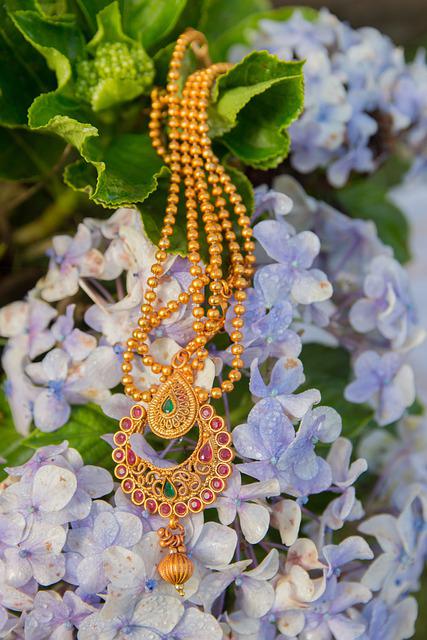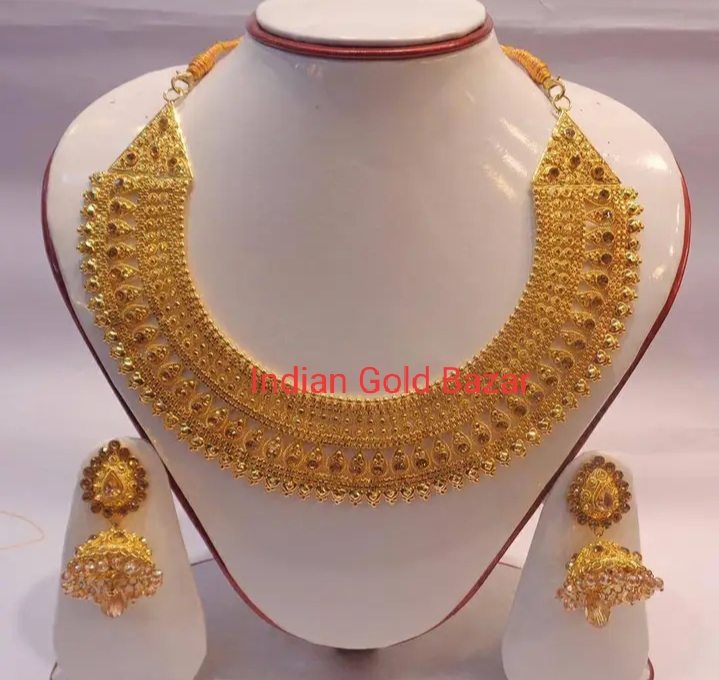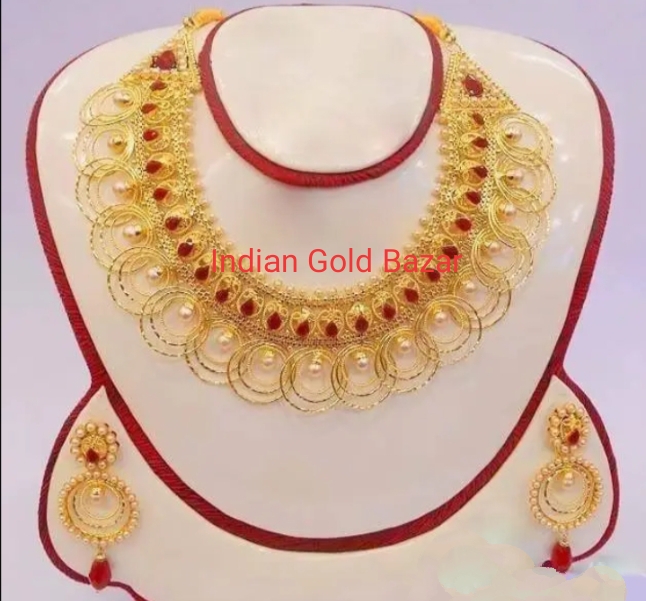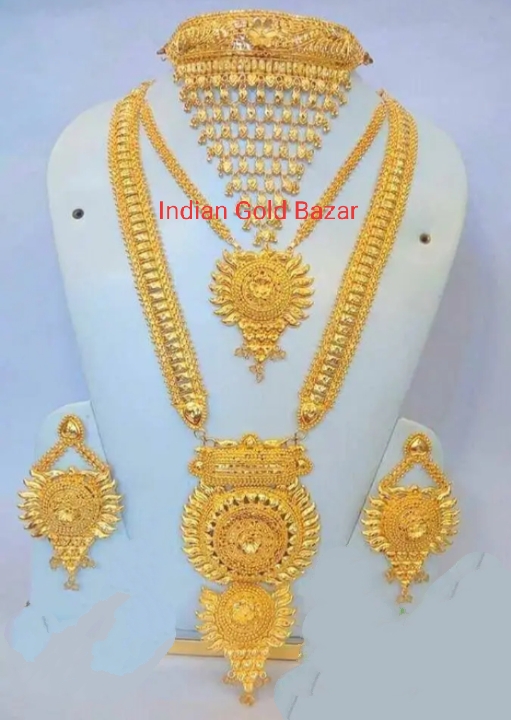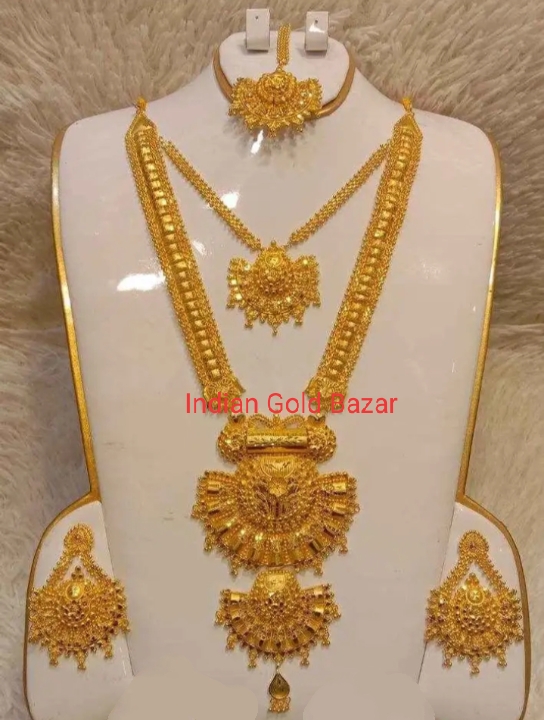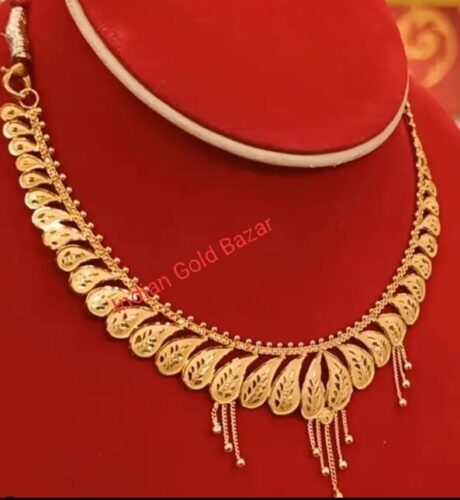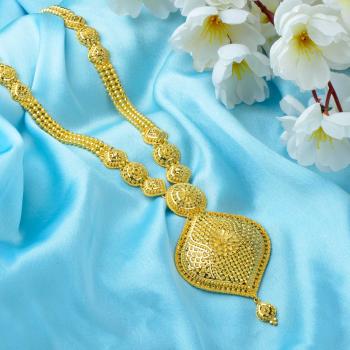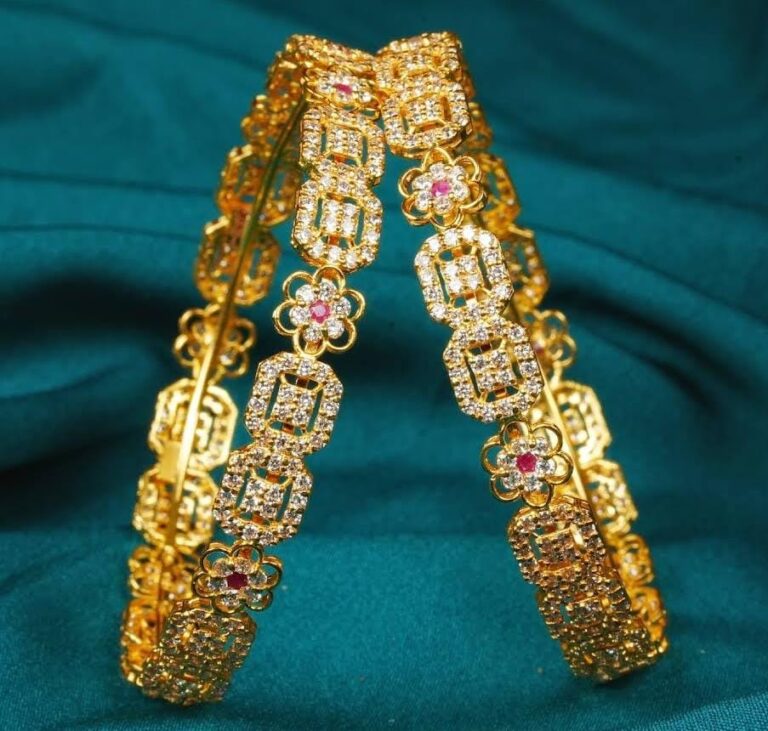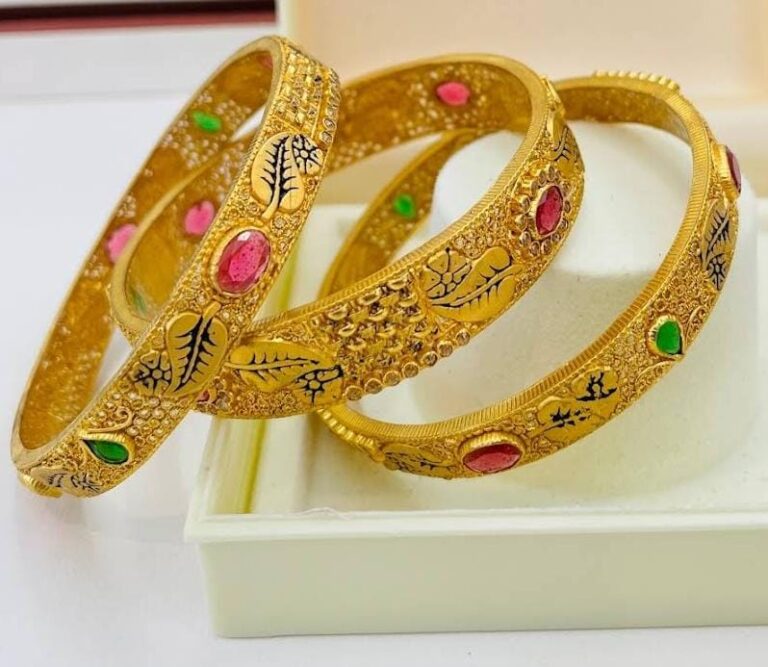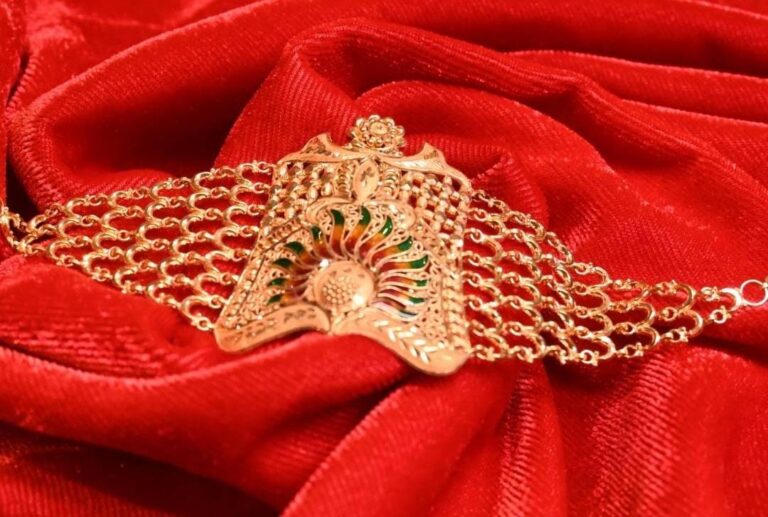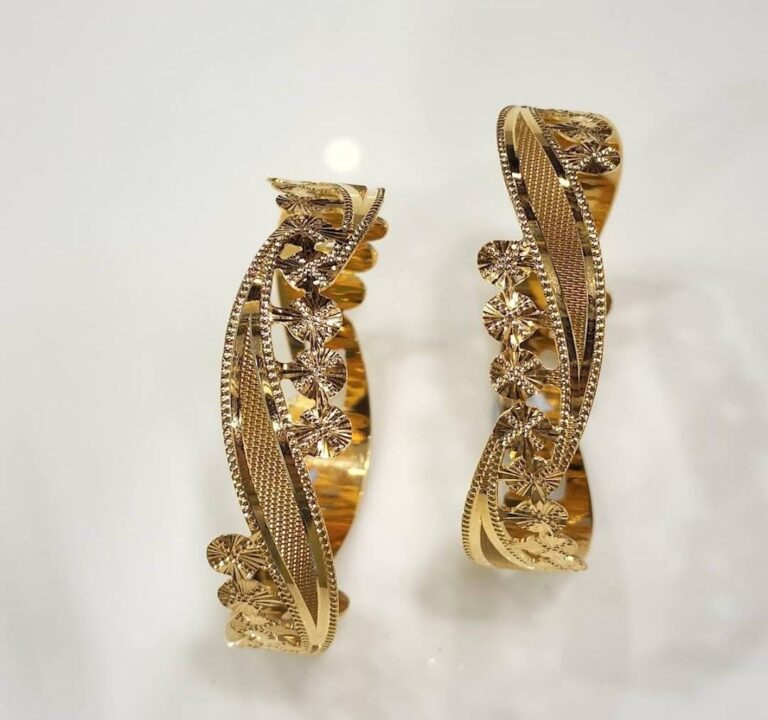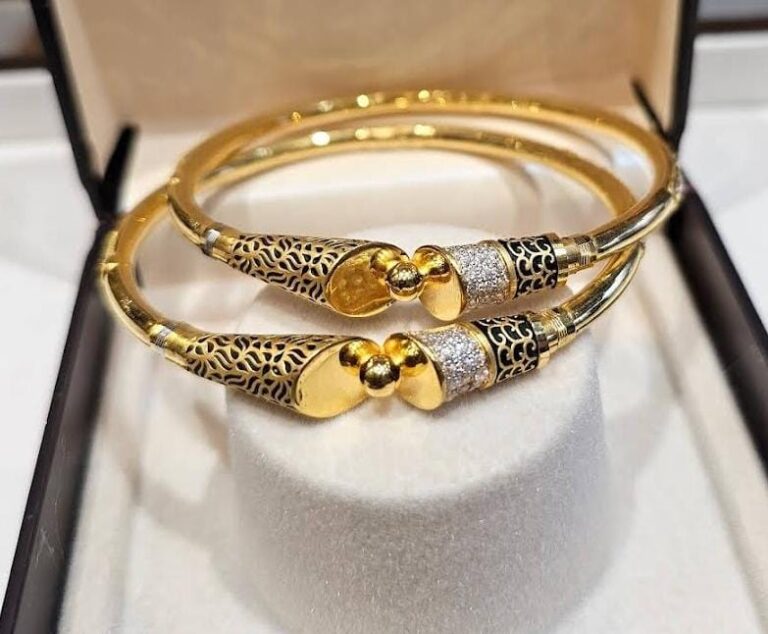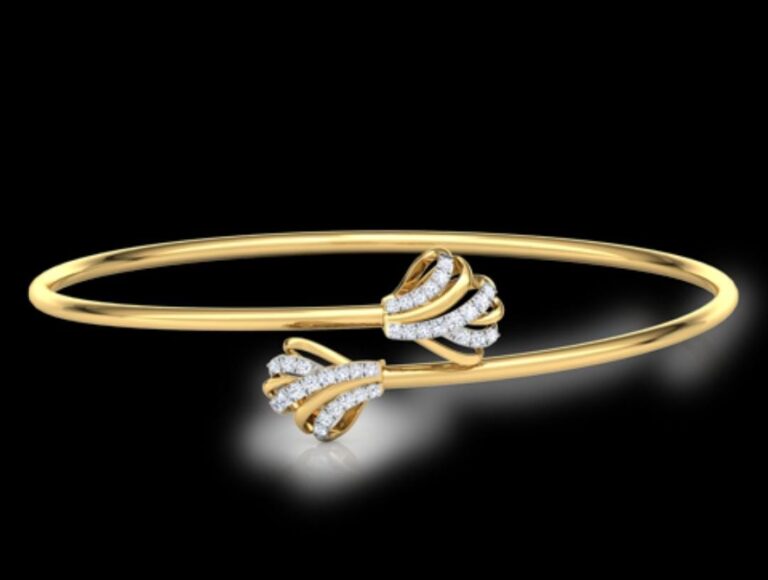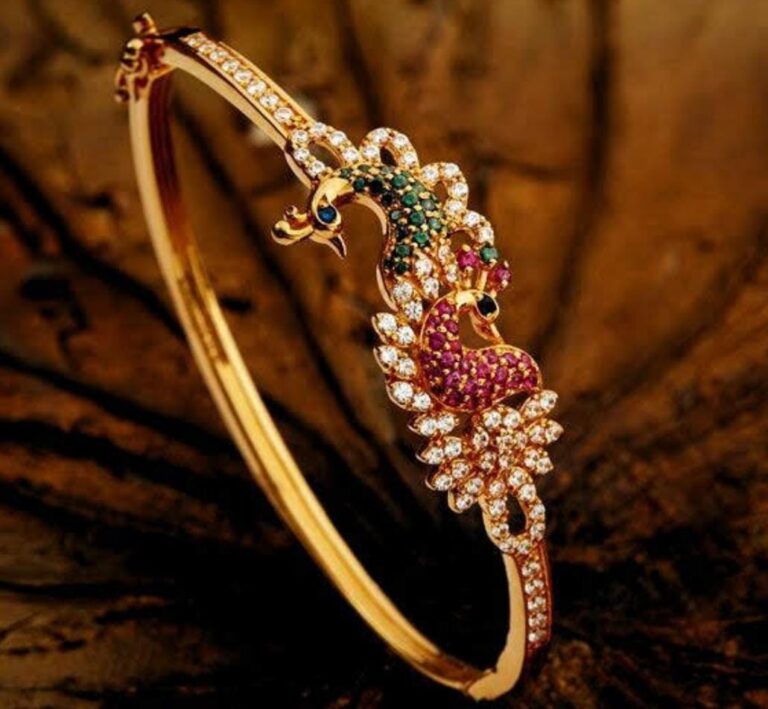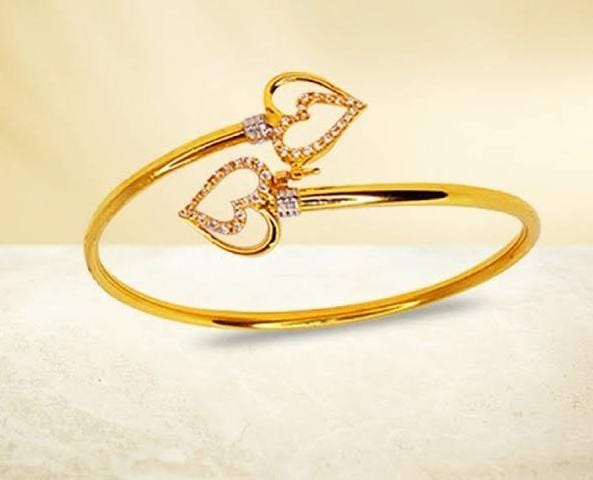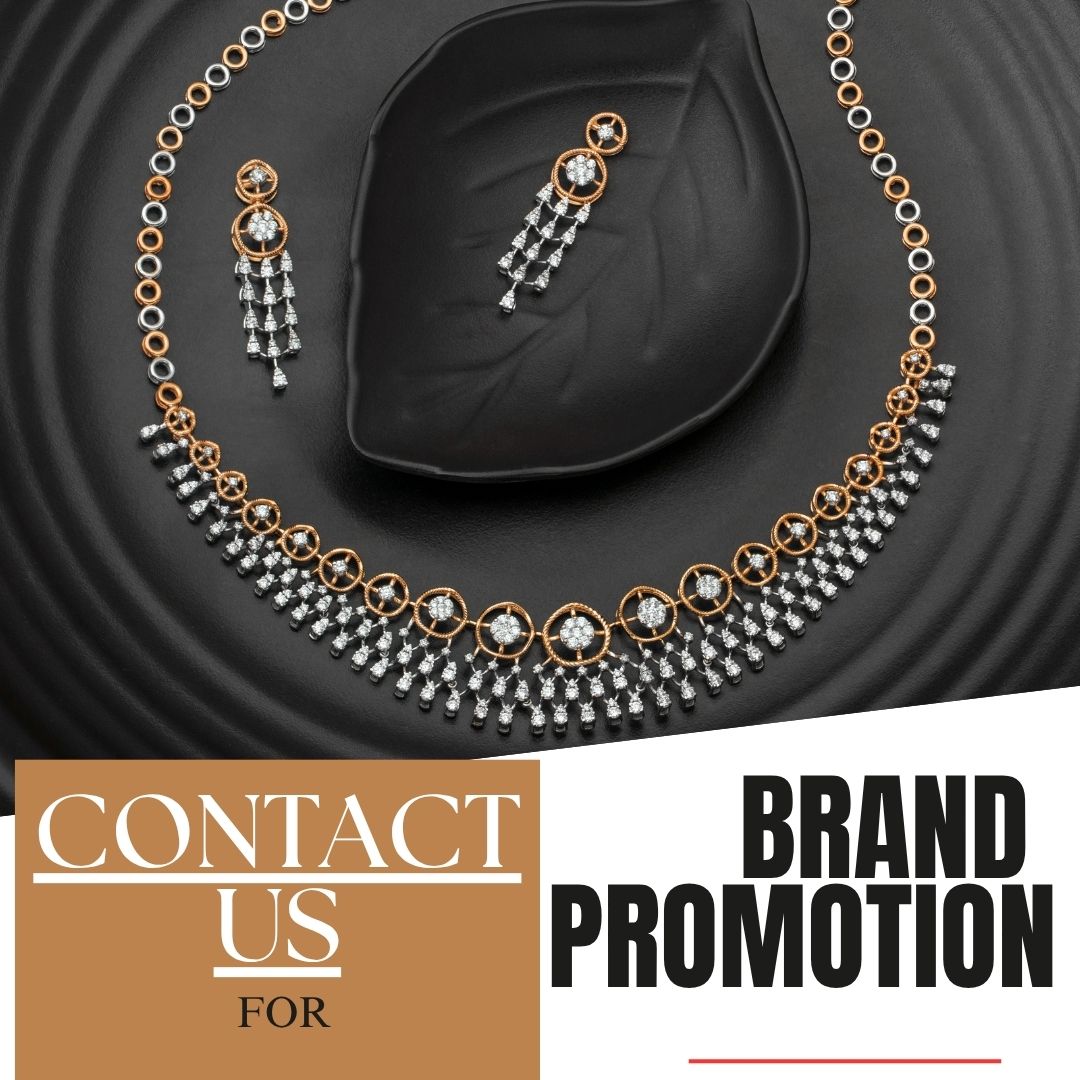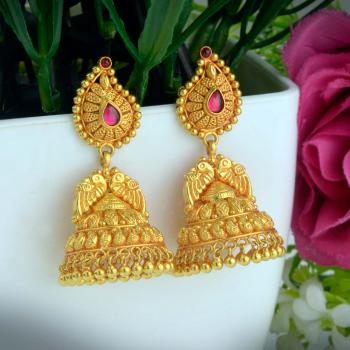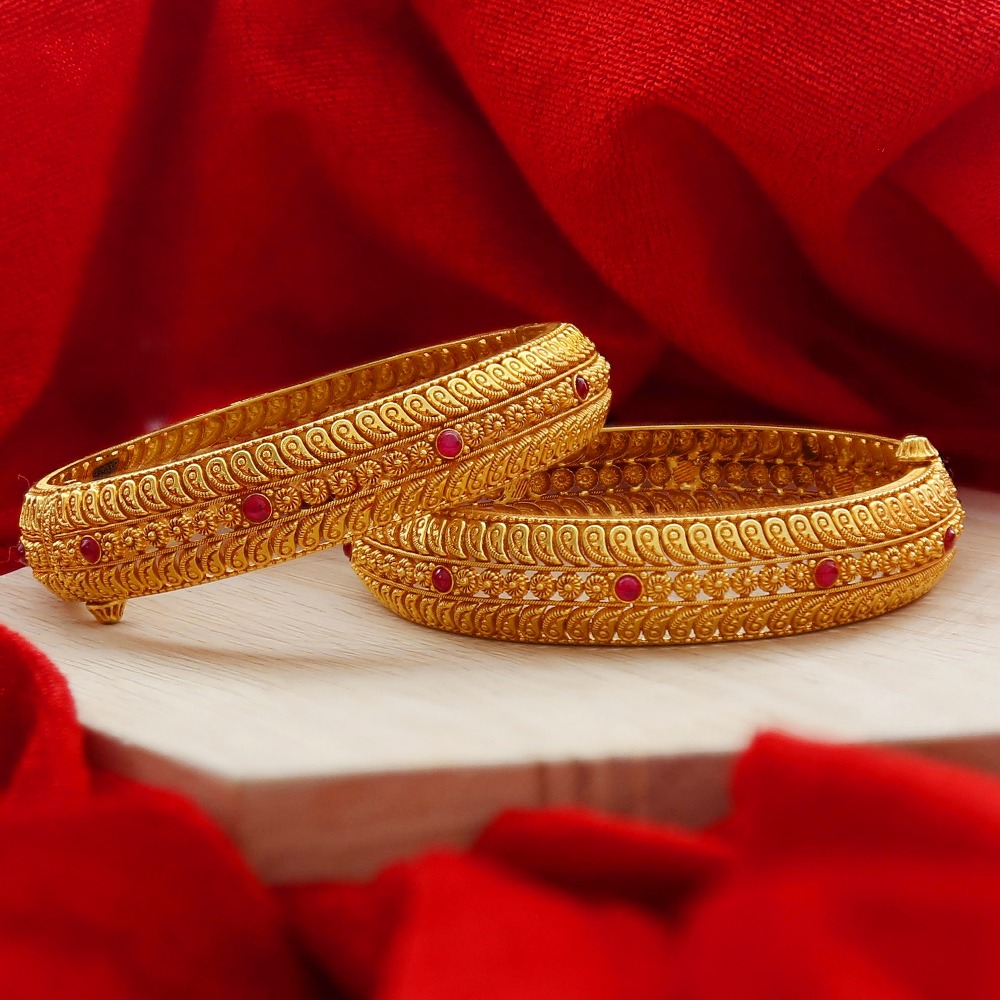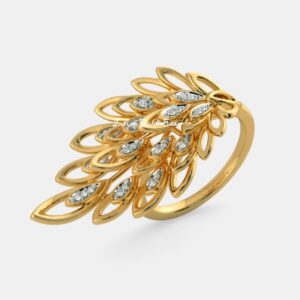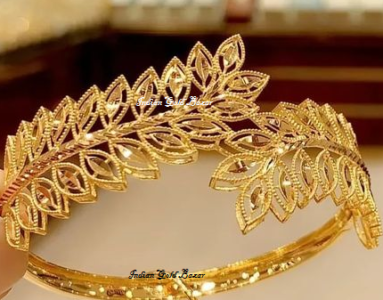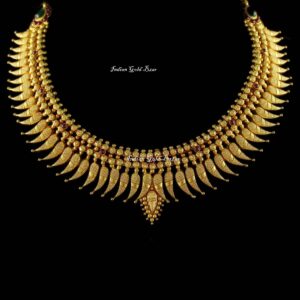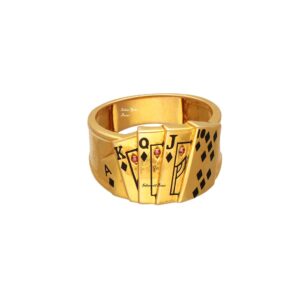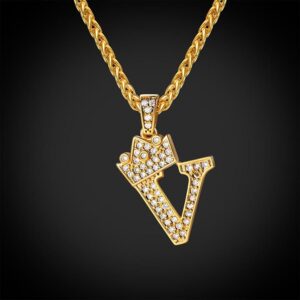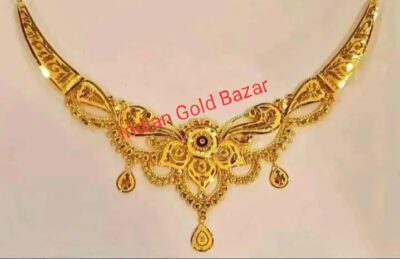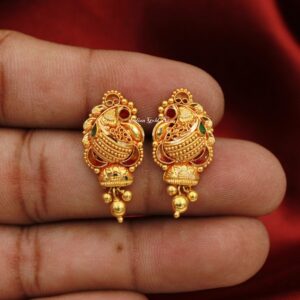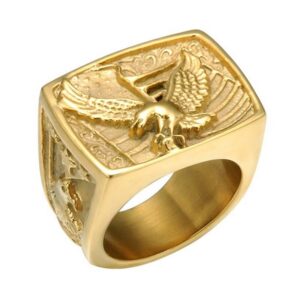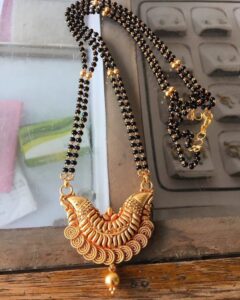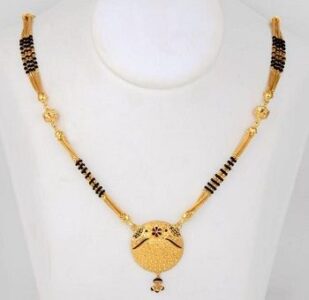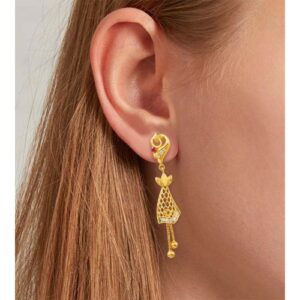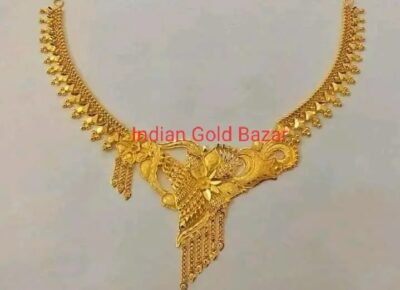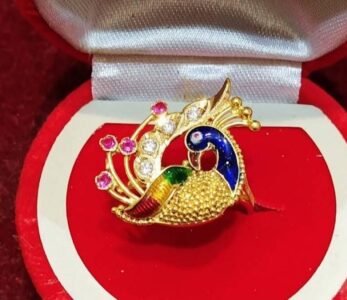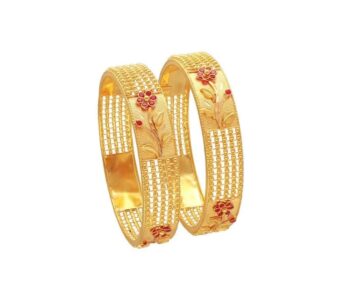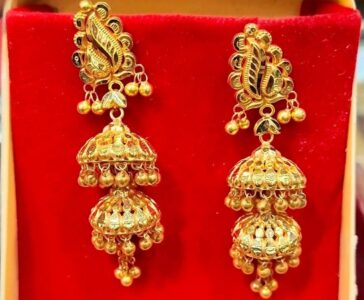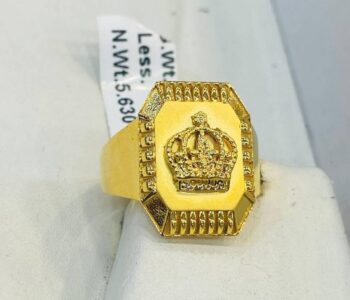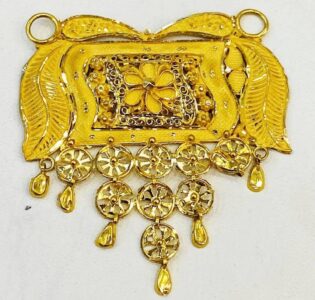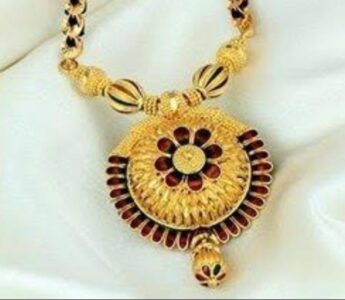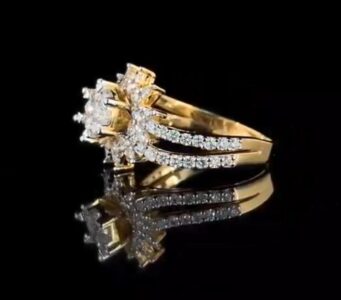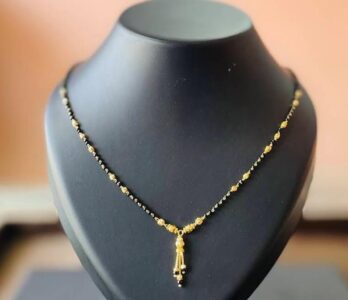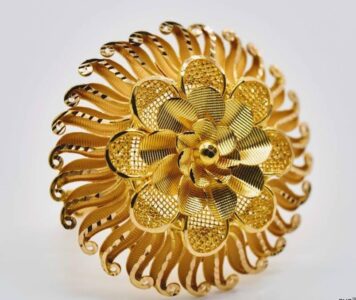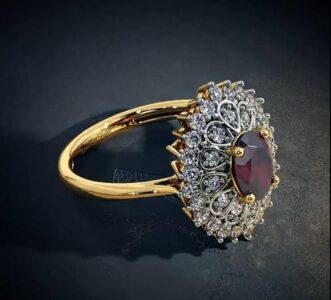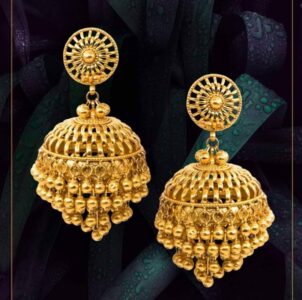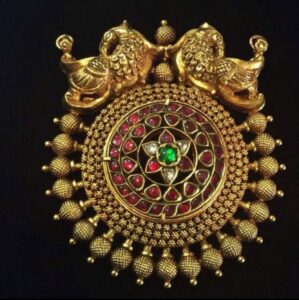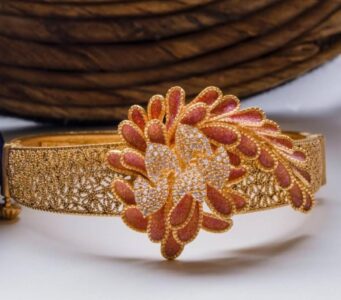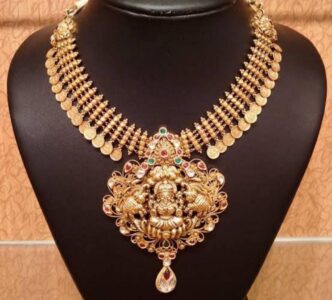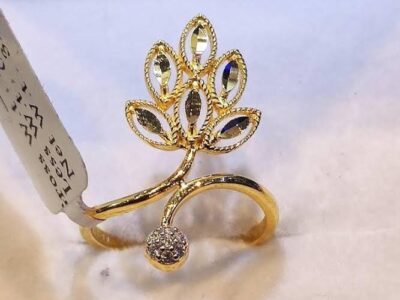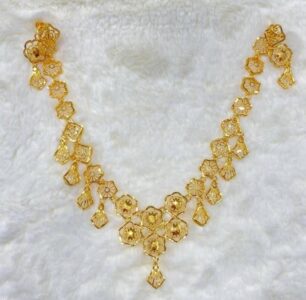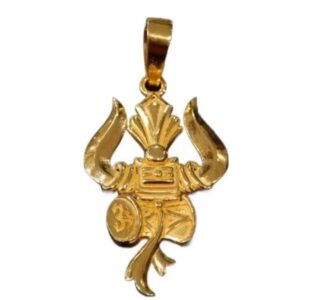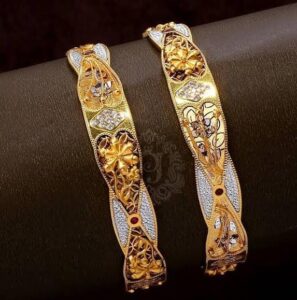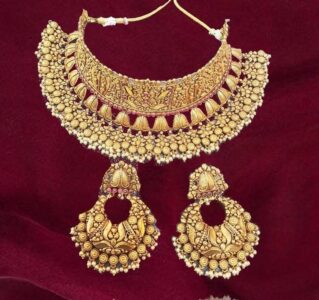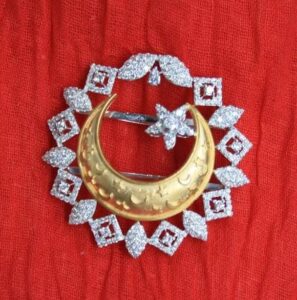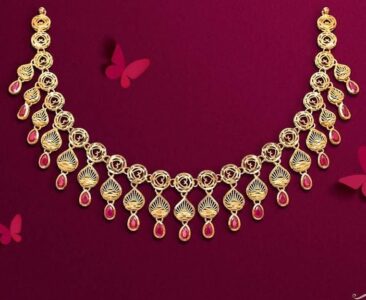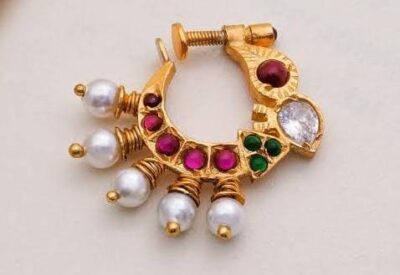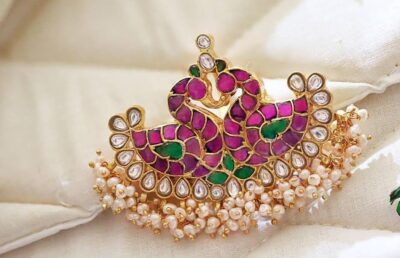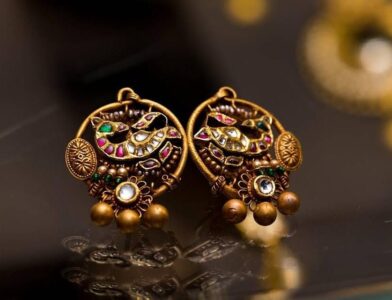- BLOG / ARTICLE
- Gold Rate/ Gold Price
- Earring/Gold Earring/Earring Design/Gold Earring Price
- Ring/ Gold Ring/ Gold Ring Design
- Necklace/Gold Necklace/ 22K Gold Necklace
- Bangle/Gold Bangle Design/18K-22K GOLD BANGLE
- Mangalsutra/Traditional gold Mangalsutra Design
- Diamond Jewelry/Diamond Rings/Diamond Necklace
gold Necklace
Gold necklaces come in a wide variety of styles, lengths, and designs. They can be made from different types of gold such as yellow gold, white gold, and rose gold, each with its unique aesthetic. Yellow gold is a classic choice, while white gold offers a more contemporary look, and rose gold has a warm, romantic hue.
Gold necklaces can also vary in their design, ranging from delicate chains to more intricate pieces adorned with gemstones or intricate patterns. They're often worn as standalone statement pieces or layered with other necklaces for a trendy, personalized look.
When shopping for a gold necklace, consider factors like the purity of the gold (measured in karats), the style that suits your preferences, and whether you want a solid gold piece or one that incorporates other elements like gemstones or intricate designs.
Gold necklaces are a timeless accessory that can elevate any outfit. They come in various styles, lengths, and designs, catering to different tastes and occasions. When choosing a gold necklace, consider factors like:
Gold Purity: Gold is measured in karats (k). 24K gold is pure gold, but it's soft and not typically used for jewelry. Common purities for jewelry are 18K, 14K, and 10K, where the lower numbers indicate a lower gold content but greater durability.
Style: Gold necklaces come in various styles, including chains (such as cable, rope, box, or snake chains), pendants (with or without gemstones), chokers, and lariats, among others. Each style offers a different aesthetic.
Length: Necklaces come in different lengths, from chokers to long chains. Consider your neck size, personal style, and whether you want a necklace to be a focal point or a subtle addition.
Design and Details: Some gold necklaces feature intricate designs, while others are simple and elegant. Some might have added embellishments like gemstones, engravings, or unique textures.
Occasion and Daily Wear: Think about whether you want a necklace for everyday wear or for special occasions. Delicate, simpler designs might suit daily wear, while more ornate pieces could be reserved for events.
When shopping for a gold necklace, it's essential to consider your personal style, budget, and the occasion for which you'll be wearing it to find the perfect piece that suits you best.
gold Necklace types
Gold necklaces come in various types, each offering a distinct style and appeal. Here are some popular types of gold necklaces:
Chain Necklaces: These are simple, elegant necklaces made entirely of gold links. They come in various styles such as:
Cable Chain: Classic round or oval links connected together.
Rope Chain: Twisted chain resembling a rope.
Box Chain: Squarish links that create a geometric pattern.
Snake Chain: Smooth, sleek links that create a flexible, serpentine appearance.
Pendant Necklaces: These feature a chain with a decorative element, or pendant, hanging from it. Pendants can be in various shapes and designs, often incorporating gemstones, initials, symbols, or intricate goldwork.
Choker Necklaces: These are shorter necklaces that sit snugly around the neck. They can be made of a solid band of gold or a chain and are trendy for a more modern, chic look.
Lariat Necklaces: These necklaces lack a clasp and are often long, allowing for versatile styling. They can be wrapped, knotted, or looped in different ways due to their open-ended design.
Statement Necklaces: These are bold, eye-catching necklaces often featuring intricate designs, larger pendants, or a combination of gold with gemstones or other materials. They're meant to stand out and make a statement.
Layered Necklaces: Wearing multiple gold necklaces of varying lengths and styles together creates a layered look. It allows for personalization and versatility, combining different textures and designs.
Personalized Necklaces: These can include nameplate necklaces, initial pendants, or necklaces customized with specific dates or words. They add a personal touch to your jewelry collection.
Each type of gold necklace offers a unique way to accessorize and complement different outfits and occasions. When choosing a necklace type, consider your personal style, the occasion you're dressing for, and how you prefer to wear your jewelry.
Gold Necklace Design
Gold necklaces come in an array of stunning designs, catering to various tastes and preferences. Here are some popular and beautiful designs:
Classic Solitaire Pendant: A single, often diamond or gemstone-studded pendant suspended from a delicate gold chain. It's timeless and elegant.
Figaro Chain: This type of chain alternates between smaller and larger links in a repeating pattern, creating a distinctive and stylish look.
Byzantine Necklace: Comprised of intricately woven links, this design exudes a sense of luxury and has a historical, ornate appearance.
Infinity Necklace: Symbolizing eternity, these necklaces often feature an infinity symbol embellished with diamonds or crafted purely from gold.
Herringbone Chain: Made of flat, interlocking gold links that form a smooth, sleek chain resembling the spine of a fish, providing a sophisticated, reflective surface.
Heart Pendant Necklace: A classic design where the pendant is shaped like a heart, symbolizing love and affection, and can be plain gold or adorned with gemstones.
Layered and Multi-Strand Necklaces: These necklaces incorporate multiple strands of gold chains of varying lengths or textures, creating a layered, dynamic look.
Initial or Nameplate Necklaces: Personalized necklaces that spell out initials or names in elegant script or block letters, adding a touch of sentimentality and individuality.
Tennis Necklace: A line of closely set diamonds or gemstones encircling the neck, offering a luxurious and glamorous appearance.
Pearl and Gold Necklace: Combining the luster of pearls with the elegance of gold, these necklaces blend sophistication with classic charm.
These designs showcase the versatility of gold necklaces, from simple elegance to intricate detailing, catering to diverse tastes and occasions. Whether you prefer a minimalist style or something more elaborate, there's a gold necklace design to suit every preference.
South Indian Gold Necklace Design
South Indian gold necklace designs are known for their intricate craftsmanship, traditional motifs, and cultural significance. Here are a few popular types:
Kasu Mala: This design consists of gold coins linked together to form a necklace. These coins might have religious symbols or intricate patterns engraved on them.
Mango Mala: Also known as manga malai, this necklace features mango-shaped motifs linked together. The mango motif is considered auspicious and is a common design element in South Indian jewelry.
Temple Necklace: Inspired by temple architecture, these necklaces feature detailed and elaborate designs resembling temple carvings. They often incorporate religious motifs like deities, intricate patterns, and gemstones.
Rice Grain Necklace: These necklaces mimic the shape and size of rice grains, arranged closely together to form a beautiful and intricate pattern.
Guttapusalu Necklace: Originating from Andhra Pradesh, this necklace features clusters of small, intricately designed gold beads suspended from a chain. It's often adorned with pearls and gemstones.
Nakshi Necklace: Nakshi work involves intricate, handcrafted designs on gold. These necklaces typically feature elaborate craftsmanship depicting motifs like peacocks, flowers, or mythological figures.
Vaddanam or Oddiyanam: While not exactly a necklace, the Vaddanam is a South Indian waistbelt adorned with intricate goldwork and gemstones. However, smaller versions can be worn as a statement piece around the neck.
These designs highlight the rich cultural heritage and craftsmanship of South Indian jewelry. They are often worn on special occasions like weddings, festivals, and religious ceremonies, symbolizing tradition, beauty, and prosperity.
North Indian Gold Necklace Design
North Indian gold necklace designs also boast a rich heritage and diversity, reflecting regional influences and artistic traditions. Here are some popular designs:
Polki Necklace: Polki jewelry features uncut diamonds set in intricate gold designs, often with colorful enamel work or gemstone embellishments. It's known for its elaborate and royal appearance.
Kundan Necklace: Similar to Polki, Kundan jewelry uses glass or highly refined stones set in gold foil. The stones are set without any backing, allowing light to enhance their sparkle.
Meenakari Necklace: This style incorporates vibrant enamel work on gold, often showcasing intricate designs and vivid colors. It's a fusion of metalwork and enamel artistry.
Thewa Necklace: Originating from Rajasthan, Thewa jewelry involves the fusion of 23K gold with colored glass. The intricate designs are handcrafted and often depict scenes from mythology or nature.
Navratna Necklace: These necklaces feature nine different gemstones representing the nine planets in Hindu astrology, set in a specific arrangement for astrological significance.
Pachchikam Necklace: Originating from Gujarat, Pachchikam jewelry uses uncut stones set in silver with intricate designs. It's gaining popularity for its rustic yet elegant look.
Rajasthani Jadau Necklace: A traditional form of jewelry from Rajasthan, Jadau involves setting gemstones (often uncut) in gold with intricate designs, often backed by Meenakari work.
Temple Necklace: Inspired by South Indian designs, these necklaces feature motifs like temple carvings, deities, and intricate patterns but are adapted to suit North Indian aesthetics.
These designs showcase the opulence, intricate craftsmanship, and cultural influences prevalent in North Indian gold necklaces. They are often worn on special occasions, celebrations, weddings, and festivals, adding a touch of tradition and elegance to the attire.
South Indian Traditional Gold Necklace Design
Traditional South Indian gold necklaces hold a significant place in the region's cultural heritage. These designs are steeped in tradition, often showcasing intricate craftsmanship and symbolic motifs. Here are some prominent traditional South Indian gold necklace designs:
Manga Malai (Mango Mala): This necklace features mango-shaped motifs linked together in a chain. The mango symbolizes fertility, and this design is considered highly auspicious.
Kasu Malai: Comprising gold coins linked together, the Kasu Malai necklace often features engraved motifs, religious symbols, or intricate designs on the coins.
Lakshmi Haram: This necklace is adorned with depictions of Goddess Lakshmi, the Hindu goddess of wealth and prosperity. It typically features Lakshmi pendants or motifs throughout the necklace.
Temple Jewelry Necklace: Inspired by temple architecture, these necklaces incorporate intricate motifs of deities, temple carvings, and religious symbols. They often feature a blend of gold, precious stones, and pearls.
Rakodi or Chandraharam: This design comprises several layers of small, crescent-shaped motifs linked together, forming a graceful and traditional necklace.
Nakshi Necklace: Nakshi work involves intricate designs handcrafted onto gold. These necklaces may depict motifs like peacocks, flowers, or mythological figures in highly detailed patterns.
Guttapusalu: Originating from Andhra Pradesh, this design features clusters of small, intricately designed gold beads interspersed with pearls and gemstones.
Pacchi Necklace: Pacchi work involves setting uncut diamonds or precious stones with gold foil, creating vibrant, colorful necklaces with traditional motifs.
Antique Temple Necklace: These necklaces are crafted to resemble antique temple jewelry, often featuring heavy detailing and religious motifs.
These traditional South Indian gold necklace designs have been passed down through generations and are often worn during weddings, festivals, and other significant cultural events, symbolizing heritage, spirituality, and prosperity.
North Indian Traditional Gold Necklace Design
North Indian traditional gold necklaces exhibit their own unique style and cultural significance. Here are some notable designs:
Rani Haar: Literally translating to "queen's necklace," Rani Haar is a long necklace with multiple layers of gold chains or strings, often adorned with gemstones, pearls, or intricate designs.
Satlada Necklace: This traditional necklace comprises seven layers of pearls, each layer shorter than the one beneath it, with the center adorned with a large pendant or brooch.
Mughal-inspired Necklaces: Reflecting influences from the Mughal era, these necklaces often feature elaborate, intricate designs with precious stones like emeralds, rubies, and uncut diamonds set in gold.
Gulband Necklace: A choker-style necklace that rests close to the neck and is adorned with intricate goldwork, often inspired by floral or geometric patterns.
Aad Necklace: A traditional Rajasthani necklace made of multiple strands of gold beads, often combined with gemstones or pearls, creating a heavy and ornate look.
Jhoomar Passa Necklace: A necklace combined with an ornate side headpiece, adorned with gemstones, pearls, or intricate goldwork, typically worn on one side of the head.
Panchlada Necklace: Similar to the Satlada, the Panchlada consists of five layers of pearls, usually paired with a statement pendant or centerpiece.
Naulakha Haar: A necklace worth nine lakhs (a unit of currency), usually featuring large, statement-making gemstones set in gold with intricate detailing.
Pachchikam Necklace: Originating from Gujarat, these necklaces feature uncut stones set in silver with elaborate designs, offering a rustic yet elegant look.
These traditional North Indian gold necklace designs often symbolize wealth, heritage, and cultural influences. They are frequently worn during weddings, festivals, and other celebratory occasions, showcasing the opulence and craftsmanship of the region's jewelry traditions.
Arab Gold Necklace Design
Arab gold necklace designs often showcase intricate craftsmanship, incorporating cultural elements and regional aesthetics. Here are some notable designs:
Hirz Necklace: Featuring a pendant-style necklace, the Hirz design incorporates intricate geometric patterns, calligraphy, and often includes verses from the Quran. It's considered a protective amulet.
Majestic Gold Chains: Thick and ornate gold chains are quite popular in Arab regions, often worn as statement pieces. These chains may have intricate patterns or be plain, showcasing the beauty of pure gold.
Taweez Necklace: Similar to the Hirz, the Taweez necklace features a small pendant or container worn as an amulet. It might contain verses, prayers, or protective symbols.
Bahraini Dilmun Necklace: This design is inspired by ancient Dilmun civilization motifs, featuring circular and geometric patterns representing historical and cultural significance.
Bedouin-style Necklaces: Reflecting the nomadic heritage, these necklaces often incorporate coins, beads, or dangles with intricate patterns and vibrant colors.
Arabesque Motifs: Many designs are inspired by Arabesque art, showcasing swirling, interlacing floral patterns, and intricate geometric shapes.
Khaleeji Designs: Influenced by the Gulf region's culture, these necklaces might feature elaborate goldwork with pearls, sometimes incorporating traditional Gulf pearls into the design.
Yemeni Henna Necklace: These necklaces take inspiration from the motifs used in Yemeni henna designs, featuring intricate patterns and delicate craftsmanship.
Algerian Kabyle Necklace: This design reflects Berber heritage, often comprising elaborate silver and goldwork with intricate engravings and designs.
Arab gold necklace designs often hold cultural significance, showcasing exquisite craftsmanship and traditional motifs that represent religious beliefs, heritage, and regional aesthetics. These designs are cherished and often worn on special occasions, celebrations, or as everyday adornments.
Europe Gold Necklace Design
In Europe, gold necklace designs vary widely, reflecting diverse cultural influences and contemporary fashion trends. Here are some prevalent European gold necklace designs:
Cable Chain: A classic design consisting of interlocking oval or round links, offering simplicity and elegance. This style is versatile and suitable for various occasions.
Pendant Necklaces: Popular across Europe, pendant necklaces feature a variety of designs, from minimalist shapes to intricate detailing, often showcasing gemstones, symbols, or personalized elements.
Choker Necklaces: Shorter necklaces that sit closely around the neck, sometimes featuring a pendant or a simple band of gold. Chokers offer a modern and stylish look.
Layered Chains: Layering multiple gold chains of varying lengths and styles has become a trendy European fashion, allowing for a personalized and eclectic style.
Bar Necklace: A sleek and minimalist design featuring a simple horizontal bar pendant suspended on a chain, often worn for its clean and contemporary look.
Art Deco-inspired Necklaces: Designs influenced by the Art Deco movement, characterized by geometric shapes, symmetry, and intricate patterns, offering a vintage yet timeless appeal.
Figaro Chain: This style comprises alternating flattened links of different sizes, adding a unique texture and visual interest to the necklace.
Statement Necklaces: Bold and eye-catching, these necklaces often feature oversized pendants, intricate designs, or unusual shapes, serving as a focal point in an outfit.
Modern Geometric Designs: European designers often incorporate geometric shapes and patterns into necklace designs, offering a sleek and contemporary aesthetic.
European gold necklace designs are diverse, blending traditional elegance with modern trends. They cater to various tastes and occasions, from everyday wear to formal events, and often showcase a fusion of cultural influences and contemporary fashion sensibilities.
America Gold Necklace Design
In America, gold necklace designs encompass a wide range of styles influenced by diverse cultural backgrounds and contemporary fashion trends. Here are some prevalent designs:
Cable Chain: Similar to European styles, cable chains with interlocking oval or round links are popular for their classic and versatile look.
Personalized Necklaces: Customized necklaces featuring initials, names, or meaningful symbols are highly popular, allowing individuals to add a personal touch to their jewelry.
Layered and Stacked Necklaces: Like in Europe, layering multiple necklaces of varying lengths and styles is a trendy way to create a personalized and dynamic look.
Minimalist Bar Necklaces: Sleek and understated, these necklaces feature a simple horizontal bar pendant on a delicate chain, appreciated for their clean, modern aesthetic.
Birthstone Necklaces: Incorporating birthstones into necklace designs is a common trend, representing individual birth months and adding a personal and sentimental element to the jewelry.
Bohemian-style Necklaces: Inspired by boho fashion, these necklaces often feature natural elements like feathers, beads, or turquoise stones, giving a free-spirited and eclectic vibe.
Nameplate Necklaces: Popularized by celebrities, nameplate necklaces with scripted or block letters spelling out names or words are a trendy and customizable option.
Layered Lariat Necklaces: Stacked lariat-style necklaces with multiple chains and drop pendants offer a chic and sophisticated look, often seen as a versatile accessory for various outfits.
Charm Necklaces: These necklaces feature an assortment of charms, symbols, or pendants, allowing individuals to create unique combinations that reflect their interests and stories.
American gold necklace designs reflect a mix of classic elegance, modern trends, and individual expression. They cater to a diverse range of styles and preferences, allowing wearers to showcase their personality through their jewelry choices.
United Kingdom Gold Necklace Design
In the United Kingdom, gold necklace designs often mirror a blend of classic elegance and contemporary trends. Some prevalent designs include:
Victorian-inspired Necklaces: Influenced by the Victorian era, these necklaces often feature intricate designs, filigree work, and motifs inspired by nature or historical elements.
Chain Necklaces: Similar to European styles, chain necklaces, including cable chains, box chains, and figaro chains, are popular for their simplicity and timeless appeal.
Lockets: Traditional lockets with hinged covers that hold photographs or mementos are cherished in the UK, often passed down as family heirlooms.
Art Nouveau and Art Deco Designs: Designs inspired by the Art Nouveau movement, characterized by flowing lines and natural motifs, as well as Art Deco's geometric shapes and symmetry, are appreciated for their vintage yet sophisticated appeal.
Pearl and Gold Combinations: Necklaces incorporating pearls with gold settings, whether in a single strand or multi-strand designs, offer a touch of elegance and sophistication.
Minimalist Pendant Necklaces: Clean and simple pendant necklaces featuring sleek geometric shapes, single stones, or minimalist designs are favored for their modern and versatile look.
Vintage Revival Designs: Reviving vintage styles from different eras, such as Edwardian, Georgian, or Retro designs, offers a sense of nostalgia and classic elegance.
Bespoke and Artisanal Jewelry: UK is known for its craftsmanship, and bespoke or artisanal gold necklaces, often featuring unique designs and handmade details, are highly valued for their individuality.
Layered and Stacked Necklaces: Like many other regions, layering and stacking necklaces of varying lengths and styles have gained popularity, allowing for personalization and versatility.
United Kingdom's gold necklace designs often reflect a love for tradition, craftsmanship, and a balance between classic sophistication and contemporary trends. These designs cater to various tastes and preferences, allowing individuals to express their style in diverse ways.
Dubai Gold Necklace Design
Dubai is renowned for its opulent and luxurious gold jewelry designs. Here are some prevalent gold necklace designs popular in Dubai:
Dubai-style Chains: Elaborate and intricate gold chains, often featuring intricate designs and patterns, are a staple in Dubai's jewelry. They can vary from classic to more ornate styles, showcasing the craftsmanship and quality of gold.
Choker Necklaces: Shorter necklaces that sit close to the neck, sometimes adorned with gemstones or intricate goldwork, are popular for their modern and glamorous appeal.
Mangalsutra-inspired Necklaces: Incorporating cultural influences, these necklaces often feature black beads interspersed with gold and sometimes diamonds, symbolizing marital status and heritage.
Lariat-style Necklaces: Versatile and stylish, lariat necklaces with long, dangling elements or tassels are favored for their elegant and luxurious appearance.
Statement Collars: Bold and eye-catching, statement collars or bib necklaces often feature intricate goldwork, gemstones, or enamel, making a lavish and prominent accessory.
Islamic Calligraphy and Motifs: Necklaces featuring verses from the Quran or Arabic calligraphy in gold are highly valued for their spiritual significance and intricate detailing.
Layered and Stacked Necklaces: Similar to trends in other regions, layering multiple gold necklaces of different lengths and styles is a popular way to create a personalized and luxurious look.
Gulf Pearl and Gold Fusion: Combining Gulf region pearls with gold settings in necklace designs showcases a blend of traditional materials with contemporary craftsmanship.
Fusion Designs: Dubai often embraces fusion designs, blending traditional Middle Eastern motifs with modern, global influences to create unique and innovative necklace styles.
Dubai's gold necklace designs are known for their lavishness, intricate details, and a fusion of cultural influences. They cater to those seeking luxury, sophistication, and a touch of traditional elegance in their jewelry choices.
What's the best gold purity for a necklace?
The best gold purity for a necklace depends on personal preference, budget, and intended use. Gold purity is measured in karats, with 24k being the purest form. However, 24k gold is soft and can be more prone to scratches or damages in jewelry. Common purities for necklaces are 18k, 14k, and 10k.
18k gold (75% pure gold) strikes a good balance between purity and durability, offering a rich color and higher resistance to tarnishing or corrosion.
14k gold (58.3% pure gold) is a popular choice for its affordability, durability, and availability in various colors due to alloy combinations.
10k gold (41.7% pure gold) is the most durable due to its higher alloy content but has a slightly paler color compared to higher karat gold.
Ultimately, choose a gold purity that aligns with your style, durability needs, and budget.
How can I choose the right length for a gold necklace?
Choosing the right length for a gold necklace depends on various factors like personal style, body type, and the look you want to achieve. Here's a general guide:
Consider Neckline and Outfit: Different necklace lengths complement various necklines and outfits. For example, shorter necklaces like chokers or 16-inch chains work well with high necklines, while longer ones, like 20 inches or more, pair nicely with lower necklines or open necklines.
Body Type: Body proportions matter. For petite frames, shorter lengths tend to work better as they won't overwhelm. Taller individuals or those with a broader build can carry off longer lengths more effectively.
Layering: If you plan to layer multiple necklaces, consider getting various lengths to create a stylish layered look. Common layering lengths are 16, 18, and 20 inches, but this can vary based on personal preference.
Personal Preference: Ultimately, it's about what feels comfortable and looks appealing to you. Trying on different lengths can give you a better sense of what suits you best.
To get a precise idea, consider using a measuring tape or string to simulate the lengths you're considering and see how they fall around your neck. This can provide a visual sense of how each length will look on you and how it might complement your style.
What are the different types of gold chains available?
Gold chains come in various styles, each offering a unique look and feel. Here are some common types:
Cable Chain: A classic chain with uniformly sized links interlocked together, forming a simple yet elegant design. It's versatile and suits various pendant styles.
Box Chain: Comprised of square links joined together, creating a smooth, sleek appearance. It's sturdy and less prone to twisting.
Rope Chain: Made of intertwined, twisted oval links, resembling a rope. This style is robust and often worn on its own due to its intricate design.
Figaro Chain: Features a pattern of flattened links (typically one long link followed by two or three shorter links). It's a popular choice for both men and women and can handle pendants well.
Snake Chain: Composed of smooth, round metal plates tightly connected, giving it a sleek and flexible appearance, resembling a snake's skin.
Singapore Chain: Comprised of twisted and diamond-cut links, creating a rope-like texture with excellent durability and flexibility.
Herringbone Chain: Consists of multiple rows of flat, v-shaped links tightly woven together, creating a luxurious and smooth surface.
Curb Chain: Made of uniformly sized links that lie flat when worn. It's a classic design suitable for various pendants.
Bead Chain: Consists of small, spherical beads linked together, creating a delicate and lightweight chain often used for minimalist or understated looks.
Each type offers its own aesthetic appeal and durability, so choosing one depends on your personal style preference and how you plan to wear the chain.
What's the significance of cultural motifs in gold necklace designs?
Cultural motifs in gold necklace designs hold immense significance, often representing rich traditions, beliefs, heritage, and symbolism unique to specific cultures. Here's a glimpse of their significance across various cultures:
Symbolism and Spirituality: Many cultural motifs embedded in necklace designs carry symbolic meanings. For instance, in some cultures, certain shapes or symbols might represent luck, protection, prosperity, or spirituality.
Heritage and Tradition: These motifs often reflect the historical and cultural heritage of a community or region. They can signify familial ties, rites of passage, or traditional stories passed down through generations.
Identity and Status: In some societies, specific necklace designs or motifs are indicative of social status, marital status, or belonging to a particular group within the community.
Artistic Expression: Cultural motifs in necklace designs showcase the artistic prowess and craftsmanship of artisans within that culture. These designs often incorporate intricate detailing and techniques unique to that heritage.
Celebration and Rituals: Necklaces featuring cultural motifs are often worn during special occasions, ceremonies, or rituals. They might be passed down as heirlooms, signifying important milestones or events in one's life.
For example:
Indian Culture: Designs like the "Mangalsutra" represent marital status and are worn by married women.
African Culture: Adinkra symbols in necklace designs hold deep meaning, conveying messages of wisdom, bravery, and other virtues.
Native American Culture: Necklaces featuring symbols like dreamcatchers or animal totems represent spirituality and connection to nature.
In essence, cultural motifs in gold necklace designs serve as a visual language, telling stories and preserving the essence of a culture's values, history, and beliefs. They play a significant role in connecting individuals to their roots and traditions, often carrying emotional and historical weight beyond their aesthetic appeal.
Can I layer different types of gold necklaces together?
Absolutely! Layering different types of gold necklaces can create a stylish and personalized look. Mixing various chain styles, lengths, and even pendant types can add depth and character to your ensemble. Here are some tips for successful necklace layering:
Vary the Lengths: Start with different length necklaces to ensure each piece stands out. Layer shorter chains like chokers or 16-inch chains with longer ones like 18 or 20 inches for a cascading effect.
Mix Chain Styles: Experiment with different chain styles to add texture and visual interest. Pair a delicate bead chain with a thicker box chain or a dainty cable chain with a statement-making rope chain.
Consider Pendant Combinations: If you're including pendants, mix and match them for a diverse yet cohesive look. For instance, a simple pendant on a shorter chain can complement a longer, plain chain or a chain with a more intricate design.
Balance and Proportion: Aim for a balanced look. Mix thicker chains with finer ones to avoid overwhelming your neckline. Gradually layering from shorter to longer lengths helps create a well-proportioned and harmonious appearance.
Minimalism Works Too: Layering doesn't always require multiple bold pieces. Sometimes, delicately layering two or three simple, fine chains can create an understated and chic look.
Experiment and Personalize: There are no strict rules! Play around with combinations, trust your instincts, and have fun creating your unique style. It's all about expressing your personality through your jewelry.
Remember, the key to successful layering is achieving a harmonious blend of different elements that complement each other while allowing each piece to shine individually.
What are the popular gemstones used in gold necklaces?
Gemstones paired with gold in necklaces create stunning combinations, offering a range of colors, textures, and styles. Some popular gemstones often used in gold necklaces include:
Diamonds: Timeless and versatile, diamonds are often set in gold due to their sparkle and elegance. They complement various styles, from solitaire pendants to intricate diamond-encrusted designs.
Sapphires: Available in various colors, sapphires are durable and add a vibrant touch to gold necklaces. Blue sapphires are well-known, but they also come in hues like pink, yellow, and green.
Emeralds: With their rich green color, emeralds add a luxurious and sophisticated look to gold necklaces. They are often seen in classic designs or as statement pieces.
Rubies: Symbolizing passion and vitality, rubies in gold necklaces create eye-catching and dramatic pieces due to their deep red hue.
Pearls: While not traditional gemstones, pearls are popular in gold necklace designs for their classic and timeless appeal. They can be used as standalone pendants or incorporated into the necklace itself.
Amethysts, Topaz, Citrine, and Others: These gemstones, among many others, offer a spectrum of colors and can be set in gold to create vibrant, personalized necklaces.
The choice of gemstones often depends on personal preference, style, and the significance one attaches to a particular stone. Some opt for birthstones, while others select gemstones based on color preferences or meanings associated with specific stones. The combination of gemstones and gold allows for endless creative possibilities in necklace designs.
How do I care for and clean my gold necklace to maintain its shine?
Caring for your gold necklace properly can help maintain its shine and beauty over time. Here are some tips:
Regular Cleaning: Use a mild detergent and warm water to clean your gold necklace. Soak it for a few minutes, then gently scrub with a soft-bristled brush, like a toothbrush, to remove dirt and grime. Rinse thoroughly and pat dry with a soft cloth.
Avoid Harsh Chemicals: Refrain from using harsh chemicals or abrasive cleaners, as they can damage the gold's surface or any gemstones present.
Storage: Store your gold necklace separately in a soft cloth pouch or a jewelry box to prevent scratches or tangling with other pieces. Gold is relatively soft and can get scratched by harder materials.
Avoid Exposure: Remove your necklace when engaging in activities like swimming, exercising, or using household chemicals. Chemicals in chlorine, for example, can affect the gold's appearance.
Professional Cleaning: Consider having your gold necklace professionally cleaned and inspected by a jeweler annually. They can check for loose settings or any other issues.
Polishing: Periodically polish your gold necklace using a jewelry polishing cloth to restore its shine. This removes tarnish and helps maintain its luster.
Be Gentle: When handling your necklace, be gentle to avoid stretching or kinking the chain, especially for delicate chain designs.
Remember, consistent care and maintenance will help preserve the beauty of your gold necklace for years to come. If your necklace has gemstones, ensure that the cleaning methods used are suitable for both the gold and the specific gemstone to avoid any damage.
What's the difference between 14K, 18K, and 24K gold?
The differences between 14K, 18K, and 24K gold lie in their purity levels:
24K Gold: It's the purest form, consisting of 100% gold. However, it's soft and prone to scratches and bends, making it less practical for everyday jewelry. Jewelry made with 24K gold is rare due to its softness.
18K Gold: This is 75% pure gold, mixed with 25% alloy metals like copper, silver, or palladium. It's more durable than 24K gold and retains a rich gold color while being suitable for everyday wear. Jewelry made with 18K gold is a balance between purity and strength.
14K Gold: Comprising 58.3% pure gold and 41.7% alloy metals, 14K gold is more durable than both 18K and 24K gold. It's often used in jewelry due to its durability, affordability, and resistance to scratches and tarnishing. However, its color might be slightly paler compared to higher-karat gold.
The choice between these gold purities often depends on personal preferences, budget, and the intended use of the jewelry. Higher-karat gold has a higher gold content but is softer, while lower-karat gold is more durable but has a lower gold content.
Are there specific gold necklace designs suitable for special occasions like weddings or formal events?
Absolutely! Different gold necklace designs are suitable for various special occasions, especially weddings or formal events. Here are some designs that are often chosen for such occasions:
Statement Necklaces: Elaborate and eye-catching, statement necklaces can be adorned with intricate goldwork, diamonds, or gemstones. They're perfect for formal events, adding a touch of elegance to the attire.
Chokers or Collar Necklaces: These shorter necklaces sit snugly around the neck and work well with strapless or off-the-shoulder gowns. They offer a sophisticated and glamorous look, particularly when embellished with diamonds or intricate gold designs.
Pendant Necklaces: Delicate pendant necklaces featuring pearls, diamonds, or other precious stones are timeless choices for weddings. They add a subtle, graceful touch to the neckline without overpowering the overall look.
Layered Necklaces: Thoughtfully layered gold necklaces can create an elegant and trendy look for formal events. Combining different lengths and styles can add depth and dimension to the outfit.
Vintage or Antique Designs: Vintage-inspired gold necklace designs often exude a timeless charm that complements the sophistication of formal events or weddings. Intricate patterns or antique settings can be captivating.
Personalized Necklaces: Customized or personalized gold necklaces with initials, names, or significant dates engraved or incorporated into the design can add sentimental value to the occasion.
When selecting a gold necklace for a special event, consider the neckline of your outfit, the overall style you wish to achieve, and how the necklace complements other accessories. Ultimately, choosing a design that resonates with your personal style while adding an elegant touch to your attire is key for special occasions.
How can I style a gold necklace for everyday wear?
Styling a gold necklace for everyday wear allows for versatility and personal expression. Here are some ways to incorporate a gold necklace into your daily outfits:
Layering Basics: Start with a simple, shorter gold chain as a base. Layer it with longer, complementary necklaces for a stylish, layered look. Mix different chain styles or add a pendant for added interest.
Minimalist Elegance: Opt for a delicate, single gold chain or a small pendant necklace for a minimalist and refined look. These pieces add a touch of sophistication without overpowering your outfit.
Casual Chic: Pair a medium-length gold chain with casual attire like a t-shirt and jeans for a laid-back yet stylish appearance. It adds a subtle hint of elegance to an everyday look.
Mixed Metals: Don't be afraid to mix gold with other metals like silver or rose gold. Mixing metals can create a contemporary and eclectic style that's perfect for everyday wear.
Solo Statement: Let a bold, standout gold necklace take center stage by wearing it alone. A chunky chain or a unique design can serve as the focal point of your outfit.
Workwear Accent: Add sophistication to your work attire by choosing a simple and elegant gold necklace. Opt for something not too flashy but enough to elevate your professional look.
Convertible Pieces: Invest in versatile necklaces that can be adjusted or worn in different ways. Convertible designs allow you to switch up the style to suit various outfits and occasions.
Remember, the key to styling a gold necklace for everyday wear is to find a balance between your personal style, the outfit you're wearing, and the level of sophistication or subtlety you want to achieve. Experimenting with different lengths, styles, and layering options can help you find the perfect combination that suits your daily aesthetic.
What are the popular gold necklace styles for different occasions?
Gold necklace styles can vary widely based on the occasion. Here's a breakdown of popular styles for different events:
Casual Outings:
Dainty Chains: Thin, delicate gold chains or chokers are perfect for casual outings. They're simple, comfortable, and add a touch of elegance without being too flashy.
Layered Necklaces: Mix and match various lengths and styles of chains for a casual yet stylish look. Layering adds depth to your outfit without overwhelming it.
Formal Events or Parties:
Statement Necklaces: Bold and intricate designs with gemstones, diamonds, or elaborate goldwork make a statement at formal events. These necklaces often become the focal point of the attire.
Chokers or Collars: Shorter necklaces like chokers or collar necklaces can add sophistication and glamour to formal attire, especially when adorned with precious stones or intricate gold details.
Work or Professional Settings:
Minimalist Designs: Simple, understated gold necklaces or pendant necklaces work well in professional settings. Opt for subtle elegance without distracting from the professional attire.
Classic Chains: Timeless and classic chain designs, such as cable chains or rope chains, can add a touch of sophistication without being too flashy or distracting.
Weddings or Special Occasions:
Pearls and Diamonds: Combine gold with pearls or diamonds for an elegant and sophisticated look. Pearls add a classic touch, while diamonds bring sparkle and luxury.
Vintage or Antique Styles: Vintage-inspired or antique gold necklaces often convey a sense of tradition and elegance, making them suitable for weddings or formal occasions.
Everyday Wear:
Versatile Chains: Choose simple, medium-length gold chains or pendant necklaces that can transition effortlessly from day to night.
Layered or Stacked: Experiment with layering multiple chains of varying lengths and styles for a stylish yet comfortable everyday look.
Selecting the right gold necklace style for a specific occasion involves considering the dress code, the formality of the event, and your personal style preferences. The versatility of gold necklaces allows for a wide range of options suitable for various occasions.
How can I determine if a gold necklace suits my skin tone or neckline?
Choosing a gold necklace that complements your skin tone and neckline can enhance your overall look. Here's how you can determine if a gold necklace suits you:
Consider Your Skin Tone:
Warm Tones: If you have warm undertones (yellow or olive undertones), gold in warmer hues like yellow gold, rose gold, or bronze tends to complement your skin tone beautifully.
Cool Tones: Those with cool undertones (pink or blue undertones) might find that white gold or silver-toned gold suits them better. These cooler shades create a striking contrast against cool-toned skin.
Assess Your Neckline:
High Necklines: Turtlenecks or high-necked tops pair well with shorter necklaces like chokers or collar necklaces. These lengths sit well above the neckline and add elegance without overwhelming the outfit.
V-Necks or Plunging Necklines: Longer necklaces work best with these necklines. Consider medium to long chains or pendant necklaces that fall within the neckline, drawing attention to the area.
Strapless or Off-the-Shoulder Necklines: These styles offer versatility. Chokers, short chains, or longer statement necklaces can all complement these necklines depending on the occasion and your personal style.
Try Different Lengths and Styles:
Experiment with various lengths and styles to see what visually balances your neckline. For example, if you have a shorter neck, longer necklaces might visually elongate your neckline.
Trust Your Instincts:
Ultimately, if you feel confident and comfortable wearing a particular gold necklace with your skin tone and neckline, it's likely to suit you well.
Seek Opinions:
Ask friends or family for their opinions when trying on different necklaces. Sometimes an outside perspective can help you decide if a necklace complements your skin tone and neckline.
Remember, these are general guidelines, and personal preference plays a significant role in choosing a gold necklace. The most important thing is to wear what makes you feel confident and comfortable.
Are there specific care tips to maintain the shine and durability of a gold necklace?
Absolutely, maintaining the shine and durability of a gold necklace involves a few care tips:
Regular Cleaning: Use a mild soap or detergent with warm water to clean your gold necklace. Soak it for a few minutes, then gently scrub with a soft-bristled brush to remove dirt and grime. Rinse thoroughly and pat dry with a soft cloth.
Avoid Harsh Chemicals: Refrain from exposing your gold necklace to harsh chemicals, including household cleaners and chlorine. These substances can tarnish or damage the gold's surface.
Storage: Store your gold necklace separately in a soft cloth pouch or a jewelry box to prevent scratches or tangling with other pieces. Gold is relatively soft and can get scratched by harder materials.
Avoid Impact and Friction: Minimize impact and friction against hard surfaces to prevent scratches or dents on the necklace. Remove your necklace when engaging in physical activities or sports.
Professional Inspection: Consider having your gold necklace professionally inspected by a jeweler annually. They can check for loose settings or any other issues that might affect its durability.
Polishing: Periodically polish your gold necklace using a jewelry polishing cloth to restore its shine. This removes tarnish and helps maintain its luster.
Be Gentle: When handling your necklace, be gentle to avoid stretching or kinking the chain, especially for delicate chain designs.
Remember, consistent care and maintenance will help preserve the beauty of your gold necklace for years to come. If your necklace has gemstones, ensure that the cleaning methods used are suitable for both the gold and the specific gemstone to avoid any damage.
What's the difference between solid gold and gold-plated necklaces?
The main difference between solid gold and gold-plated necklaces lies in their composition and durability:
Solid Gold:
Solid gold necklaces are made entirely of gold throughout the piece. They can be 10K, 14K, 18K, or 24K gold, indicating the purity of the gold used. For instance, 24K gold is 99.9% pure gold.
Solid gold jewelry tends to be more expensive due to its higher gold content. It's durable, resistant to tarnishing, and retains its value well over time.
However, higher-karat gold, especially 24K, is softer and more prone to scratches or dents compared to lower-karat gold. As a result, it might not be ideal for everyday wear.
Gold-Plated:
Gold-plated necklaces are made of a base metal, such as copper, brass, or sterling silver, coated with a thin layer of gold through a process called electroplating.
The gold layer in gold-plated jewelry is much thinner than solid gold, measured in microns. This layer can wear off over time with regular use, exposing the base metal underneath.
Gold-plated jewelry is more affordable than solid gold and often offers the appearance of gold at a lower cost. However, it requires more care and may need re-plating to maintain its appearance.
When choosing between solid gold and gold-plated necklaces, consider your budget, desired durability, and how often you plan to wear the necklace. Solid gold offers longevity and value but comes with a higher price tag, while gold-plated options are more affordable but require more maintenance and might not last as long.
Can I customize a gold necklace with my preferred design or gemstones?
Absolutely, customizing a gold necklace with your preferred design or gemstones is a fantastic way to create a unique and personalized piece. Many jewelers offer customization services, allowing you to bring your vision to life. Here's how you can go about it:
Find a Reputable Jeweler: Look for a jeweler or jewelry designer experienced in custom work. Check their portfolio and reviews to ensure they align with your preferences and quality standards.
Discuss Your Vision: Schedule a consultation with the jeweler to discuss your ideas. Bring sketches, photos, or any inspiration you have for the design. Explain your preferred style, metal choice (like yellow, white, or rose gold), gemstones, and any specific details you want.
Collaborate on the Design: Work closely with the jeweler to finalize the design. They might provide sketches, CAD (computer-aided design) renderings, or wax models to visualize the piece before crafting it.
Choose Gemstones: If you want gemstones incorporated, discuss the type, size, cut, and quality you desire. The jeweler can help source the right stones and advise on their compatibility with the design.
Approve the Design: Once the design is finalized, review and approve it before the jeweler proceeds with crafting the necklace.
Crafting Process: The jeweler will start crafting the necklace based on the agreed-upon design. This process may take some time, depending on the complexity of the design and availability of materials.
Regular Updates: Stay in touch with the jeweler during the crafting process to receive updates and ensure the piece is being made according to your specifications.
Final Inspection and Delivery: Once the necklace is complete, the jeweler will present it to you for a final inspection. Ensure it meets your expectations before taking it home.
Customizing a gold necklace allows you to create a one-of-a-kind piece that reflects your style, personality, and preferences. Communication and collaboration with the jeweler are key to achieving the desired outcome.
Which gold necklace designs are considered timeless and versatile?
Several gold necklace designs have stood the test of time, remaining versatile and eternally stylish. Here are some timeless and versatile gold necklace designs:
Cable Chain: A classic design with uniformly sized links interlocked together. Its simplicity makes it versatile and suitable for various occasions.
Pendant Necklace: A single chain with a pendant, such as a solitaire diamond, a gemstone, or a symbolic charm. The elegance of a pendant necklace makes it timeless and adaptable to different styles.
Rope Chain: Composed of intertwined, twisted oval links resembling a rope. Its luxurious and intricate appearance makes it a classic choice.
Figaro Chain: Features a pattern of flattened links (typically one long link followed by two or three shorter links). This style offers a timeless yet slightly more distinctive look.
Box Chain: Comprised of square links joined together, creating a smooth, sleek appearance. Its durability and modern aesthetic make it a versatile choice.
Layered Chains: Mixing and layering different lengths and styles of chains can create a versatile and trendy look that's easy to customize to suit different outfits and occasions.
Bead Chain: Consisting of small, spherical beads linked together, creating a delicate and lightweight chain suitable for everyday wear or layering.
These designs have remained popular throughout generations due to their simplicity, elegance, and adaptability. They serve as foundational pieces that can be worn alone for a minimalistic look or layered and styled to add depth and personality to your outfit. Their timeless appeal makes them a worthwhile investment for anyone looking for versatile gold necklace options.
What factors should I consider when buying a gold necklace as an investment piece?
When buying a gold necklace as an investment piece, several factors can influence your decision:
Purity (Karat): Higher-karat gold (like 18K or 24K) contains more gold and tends to have a higher intrinsic value. However, 24K gold is softer and might be less suitable for everyday wear.
Market Value: Keep an eye on the current market price of gold. It fluctuates based on economic conditions, demand, and supply. Buying when prices are favorable can be beneficial for investment purposes.
Design and Craftsmanship: Certain classic designs or artisan-crafted pieces might appreciate in value over time due to their craftsmanship or historical significance.
Hallmarks and Authenticity: Ensure the necklace is hallmarked, indicating its gold purity and authenticity. Certifications from reputable sources or jewelers can add credibility to your investment.
Weight and Size: The weight of the gold necklace directly influences its value. Heavier pieces typically have more gold content and can potentially offer higher returns as an investment.
Resale Value: Consider the potential resale value of the necklace. Classic designs or pieces with historical significance often hold value better over time.
Storage and Maintenance: Proper storage and maintenance can preserve the necklace's condition and value. Investing in a secure storage option and regular upkeep can protect your investment.
Seller Reputation: Buy from reputable and trusted sources, such as established jewelers or certified dealers, to ensure you're getting genuine gold at fair prices.
Diversification: Consider diversifying your investment portfolio. While gold can be a valuable investment, spreading your investments across different asset classes can mitigate risks.
Remember, while gold can be a tangible asset and a hedge against inflation, its value can fluctuate. Consider your investment goals, risk tolerance, and the broader investment landscape before purchasing a gold necklace as an investment piece.
Are there cultural or symbolic meanings behind certain gold necklace designs or motifs?
Absolutely, gold necklace designs often carry significant cultural or symbolic meanings rooted in traditions, beliefs, or historical contexts across various cultures. Here are a few examples:
Indian Culture - Mangalsutra: The Mangalsutra is a significant necklace worn by married women in India. It consists of black and gold beads on a gold chain and symbolizes the marital bond and auspiciousness.
Adinkra Symbols - Ghanaian Culture: Adinkra symbols, often incorporated into jewelry, convey various meanings like wisdom, bravery, unity, or other virtues in Ghanaian culture. These symbols are rich in cultural significance and carry deep messages.
Native American Totem Necklaces: Necklaces featuring totem symbols like animals or elements hold spiritual significance for Native American tribes. They represent heritage, identity, and a connection to nature.
Chinese Culture - Dragon and Phoenix: In Chinese culture, necklaces featuring the dragon and phoenix motifs symbolize the union of yin and yang, representing harmony, balance, and marital bliss.
Egyptian Ankh Necklace: The ankh symbol, resembling a cross with a loop, represents life and immortality in ancient Egyptian culture. An Ankh necklace carries symbolic importance related to life and spirituality.
Celtic Knotwork Necklaces: Celtic knot designs symbolize interconnectedness, eternity, and unity in Celtic culture. These intricate knots often found in necklaces represent continuity and an unending bond.
Hamsa Hand Necklaces - Middle Eastern Culture: The Hamsa hand necklace, featuring an open palm with an eye in the center, is believed to ward off evil and bring protection, luck, and blessings in Middle Eastern cultures.
These cultural motifs and symbols embedded in gold necklace designs serve as visual representations of heritage, values, spirituality, and identity. They hold deep significance and often carry stories passed down through generations, making them more than just ornamental jewelry.
What are the latest trends in gold necklace designs?
The trends in gold necklace designs often evolve with changing fashion and style preferences. Here are some of the latest trends seen in gold necklace designs:
Layered and Stacked: Layering different lengths and styles of gold necklaces remains a popular trend. Combining various chains, textures, and pendant sizes creates a stylish and dynamic look.
Chains with Texture: Textured chains, like rope or snake chains, are gaining popularity. Their unique textures add visual interest and depth to the necklace, elevating its overall look.
Mixed Metals: Combining different metals like gold with silver or rose gold is a growing trend. Mixing metals adds a modern and eclectic touch to necklace designs.
Personalized and Customized: Customizing gold necklaces with initials, names, or significant dates continues to be in vogue. Personalized touches create unique pieces with sentimental value.
Convertible Styles: Necklaces designed to be worn in multiple ways or transformed into different styles are becoming more popular. Versatile pieces that can be adjusted to fit various occasions offer great value.
Bold and Chunky Chains: Chunky chain necklaces, with larger and more prominent links, are making a statement. These bold designs add a fashion-forward edge to any outfit.
Minimalist Elegance: Delicate and minimalist gold necklaces, often with simple pendants or subtle details, remain a timeless trend. They offer understated elegance suitable for everyday wear.
Geometric Shapes: Necklaces featuring geometric shapes or abstract designs are gaining attention. These modern and artistic pieces add a contemporary flair to outfits.
Remember, trends in gold necklace designs can vary, and personal style plays a significant role in choosing the right piece. Experimenting with these trends allows you to find a style that resonates with your aesthetic preferences.
How do I mix and match different jewelry pieces with a gold necklace for a stylish look?
Mixing and matching jewelry pieces with a gold necklace can create a stylish and layered look. Here are some tips to help you achieve a well-coordinated ensemble:
Consider Balance: Balance is key when layering jewelry. Mix different types of pieces like rings, bracelets, and earrings with your gold necklace, ensuring they complement rather than overpower each other.
Mix Metals: Don't be afraid to mix metals. Pair your gold necklace with silver, rose gold, or even platinum pieces. Mixing metals can add depth and interest to your overall look.
Layering Necklaces: Experiment with layering multiple necklaces of varying lengths and styles. Mix delicate chains with statement pieces or add a pendant to one of the layers for a focal point.
Minimalist and Statement: Combine minimalist pieces with statement jewelry. For instance, pair a simple gold chain necklace with bold earrings or stackable rings for a balanced yet striking look.
Consider Proportions: Pay attention to the proportions of the jewelry pieces. If you're wearing a chunky necklace, opt for smaller, daintier earrings or bracelets to maintain balance.
Play with Textures: Mix jewelry pieces with different textures. For example, pair a textured gold necklace with smooth bangles or a pearl bracelet for an interesting contrast.
Accessorize with Purpose: Ensure each piece serves a purpose in your ensemble. Don't overcrowd your look with too many pieces; aim for a cohesive and intentional combination.
Match to Outfit Style: Consider the style of your outfit. For casual looks, opt for simpler jewelry combinations, while for formal occasions, mix and match more elaborate pieces to elevate the ensemble.
Remember, there are no strict rules in mixing and matching jewelry. The key is to experiment, trust your instincts, and have fun creating combinations that reflect your personal style and make you feel confident.
What are the different types of gold available for necklaces, and how do they differ?
Several types of gold are commonly used in crafting necklaces, each with its own characteristics:
Yellow Gold: This is the most traditional and classic type of gold used in jewelry. It's naturally occurring and is mixed with other metals like copper and zinc for durability. The karatage determines its purity, with 24K being the purest form (100% gold) and lower karats like 18K, 14K, or 10K containing a lower percentage of pure gold mixed with other metals.
White Gold: To achieve a silvery-white appearance, yellow gold is alloyed with white metals like nickel, palladium, or silver, and then plated with rhodium for added brightness. White gold is often favored for its contemporary look.
Rose Gold: Known for its pinkish hue, rose gold is created by mixing yellow gold with copper alloys. The more copper added, the stronger the reddish-pink color becomes. It offers a unique and romantic appearance.
Green Gold: Less common than other types, green gold results from mixing yellow gold with specific silver alloys or sometimes cadmium. The hue ranges from light green to olive and is used selectively in jewelry making.
Black Gold: Achieved through a process called black rhodium plating, where a layer of rhodium is applied over white gold or other metals, giving it a sleek black appearance. It's more of a surface treatment and may wear off over time.
Each type of gold offers a distinct aesthetic appeal, and the choice often comes down to personal preference for color, style, and durability. Factors like skin sensitivity or allergies might also influence which type of gold is best for a necklace.
What's the ideal length for a gold necklace?
The ideal length for a gold necklace can vary significantly based on personal style, body type, and the desired look or occasion. Here are some common lengths and their typical uses:
Choker (14-16 inches): Sits snugly around the neck and complements collarbone-revealing outfits. It's great for layering with longer necklaces or for a minimalist, trendy look.
Princess (17-19 inches): Falls just below the collarbone and is one of the most versatile lengths. It pairs well with various necklines and can be worn alone or layered with shorter or longer necklaces.
Matinee (20-24 inches): Extends just above the bust and is often considered an elegant choice for both casual and formal wear.
Opera (28-34 inches): Typically worn as a single strand, it hangs below the bust or at the sternum level. This length is great for creating a statement or for formal occasions.
Rope (36 inches and longer): Offers the most versatility, as it can be worn long, doubled, or even tripled for different looks. It's a classic choice for formal attire or for creating dramatic effects with layering.
Ultimately, the best length for a gold necklace depends on individual style preferences, the outfit it will accompany, and the intended occasion. Trying out different lengths can help determine what feels most comfortable and flattering for each person.
How do I choose the right style of gold necklace to match my outfit or occasion?
Choosing the right style of gold necklace to match your outfit or occasion involves considering several factors:
Neckline: The neckline of your outfit plays a crucial role in determining the necklace style. For example, a scoop neck top pairs well with shorter necklaces like chokers or princess-length chains, while a V-neck dress complements pendant necklaces or chains that follow the neckline's shape.
Occasion: The formality of the event or occasion also influences the necklace choice. For formal events, opt for classic designs like a simple chain or a single pendant necklace. For casual outings, you can experiment with layered or statement necklaces.
Outfit Style: Consider the overall style of your outfit. If your attire is more casual or bohemian, you might prefer layered necklaces or those with intricate designs. For formal wear, elegant and minimalistic necklaces often work best.
Color Scheme: Consider the color of your outfit. Certain gold tones, like rose gold or yellow gold, might complement specific colors better. For instance, warmer tones like yellows, oranges, and browns tend to match well with yellow gold, while cooler tones like blues and greens can complement white gold or platinum.
Personal Preference: Ultimately, your personal style and comfort matter. Some individuals prefer minimalist, subtle necklaces, while others may prefer bold, statement pieces. Choose a necklace that resonates with your personal taste and makes you feel confident.
Layering: Experimenting with layering different necklace lengths and styles can add depth and dimension to your look. Mixing delicate chains with pendants, chokers, or longer chains can create a stylish and personalized ensemble.
Always trust your instincts and go for a necklace that makes you feel comfortable and confident. Consider the occasion, outfit, and your personal style preferences to choose the perfect gold necklace for any occasion.
What are the trending designs or styles in gold necklaces right now?
As of my last update in 2022, several styles and designs were trending in gold necklaces. However, trends in jewelry, including necklace designs, can evolve over time. Here are some styles that were popular:
Layering: Layering multiple necklaces of varying lengths and styles was a significant trend. Mixing delicate chains, pendants, and chokers created a stylish and personalized look.
Chokers: Simple and adorned chokers were making a comeback. They were worn both individually and as part of layered necklace combinations.
Pendant Necklaces: Minimalistic and personalized pendants, such as initials, zodiac signs, or meaningful symbols, gained popularity. These added a touch of individuality to the necklace.
Vintage and Retro Styles: Antique-inspired designs, including intricate patterns, filigree work, and Victorian-era motifs, were sought after for their timeless appeal.
Statement Pieces: Bold and eye-catching statement necklaces, often featuring oversized chains, unique shapes, or bold gemstones, were favored for making a fashion statement.
Mixing Metals: Combining different metal tones like yellow, rose, and white gold in a single necklace or through layered necklaces offered a modern and eclectic look.
Versatile Pieces: Necklaces that could be adjusted or transformed into different styles (such as converting into bracelets or having detachable elements) were gaining attention for their versatility.
Trends in jewelry can change based on fashion cycles, celebrity influences, and evolving design preferences. To find the latest trends in gold necklaces, it's a good idea to explore recent collections from jewelry designers or look at current fashion magazines and influencers for inspiration.
Can gold necklaces be layered, and if so, how can I mix different lengths and styles effectively?
Absolutely, gold necklaces can be beautifully layered for a stylish and personalized look. Mixing different lengths and styles effectively involves a few key considerations:
Varying Lengths: Start by selecting necklaces of varying lengths. Combine chokers with princess-length or matinee-length necklaces to create dimension and depth.
Consider Proportions: Ensure the necklaces complement each other in terms of thickness and style. Mixing different thicknesses adds visual interest without overwhelming the look.
Balance and Symmetry: Aim for a balanced look. Layering necklaces in odd numbers often creates a visually appealing arrangement. For instance, try wearing three necklaces of different lengths or styles.
Mixing Textures: Experiment with different textures, such as pairing a delicate chain with a pendant necklace or a beaded necklace with a sleek chain. This adds contrast and depth to your layered style.
Focus on Focal Points: Use one necklace as the focal point and layer others around it. For instance, a statement pendant can serve as the centerpiece, surrounded by simpler chains or shorter necklaces.
Metal Mixing: Don't be afraid to mix metals if you're comfortable doing so. Combining yellow, rose, and white gold can create an eclectic and modern look. Just ensure they complement each other harmoniously.
Personalization: Incorporate personalized elements like initials, charms, or meaningful pendants to make the layered necklace combination uniquely yours.
Try Before Wearing: Experiment and try different combinations before wearing them out. Play around with lengths, styles, and textures to find what suits your outfit and personal style best.
Remember, there's no strict rule when it comes to layering necklaces—it's about expressing your individual style. Play around with different combinations until you find a layered look that feels comfortable and reflects your personality.
What's the significance of different gold necklace motifs or symbols?
Gold necklace motifs or symbols often carry various meanings and significance, adding depth and personalization to the jewelry. Here are some common motifs and their symbolic meanings:
Heart: A universally recognized symbol of love and affection. Heart-shaped pendants or motifs are often exchanged as tokens of romantic love or as expressions of deep emotions.
Infinity Symbol: Represents eternity, limitless possibilities, and everlasting love. It's a popular choice for symbolizing a bond that's infinite and unbreakable.
Cross: A religious symbol representing faith, spirituality, and devotion. Cross pendants hold significant meaning for those who follow Christianity or seek spiritual connection.
Hamsa Hand: A protective symbol in many cultures, believed to bring luck, happiness, and protection against negative energies.
Tree of Life: Represents growth, strength, and interconnectedness. It symbolizes the circle of life, familial bonds, and the connection between all living things.
Lotus Flower: Symbolizes purity, enlightenment, and spiritual awakening. It's associated with beauty emerging from murky waters, signifying resilience and growth.
Animals: Different animals symbolize various traits and qualities. For instance, a butterfly symbolizes transformation and growth, while a lion signifies strength and courage.
Evil Eye: Often used as a protective talisman against malevolent forces and negative energies. It's believed to ward off harm and bring good luck.
Initials or Zodiac Signs: Personalized symbols like initials or zodiac signs add a touch of individuality and significance to the necklace, representing personal characteristics or attributes.
The significance of these motifs can vary across cultures and personal beliefs. When choosing a gold necklace with specific symbols or motifs, consider the meaning that resonates with you or aligns with the message you wish to convey. Ultimately, these symbols can hold personal significance, serving as reminders of values, beliefs, or connections that are important to the wearer.
How do I determine the authenticity and quality of a gold necklace before purchasing?
Several methods can help you determine the authenticity and quality of a gold necklace before making a purchase:
Hallmarks and Stamps: Check for hallmarks or stamps on the necklace. These marks indicate the purity of the gold and the manufacturer's or jeweler's mark. Common purity stamps include 24K, 18K, 14K, or 10K for gold in the United States. These stamps are often located near the clasp.
Purity Testing: Use an acid test kit or electronic gold tester to determine the purity of the gold. These kits are available at jewelry supply stores and can confirm the karat of the gold.
Magnet Test: Gold is not magnetic, so if a necklace is attracted to a magnet, it's likely not pure gold. However, this test is not conclusive as other metals used in the alloy may be magnetic.
Weight and Density: Gold is a dense metal, so a genuine gold necklace will feel heavier than a piece made from other materials. Compare the weight of the necklace to its size and thickness.
Color and Appearance: Pure gold doesn’t tarnish or change color, so examine the necklace for discoloration or signs of fading. Also, be aware that different karats of gold (e.g., 18K, 14K) have different shades due to the alloy mix.
Acid and Scratch Tests (Professional Inspection): A certified jeweler can perform acid and scratch tests to verify the gold's authenticity and purity. This might involve taking a small sample from an inconspicuous area of the necklace.
Seller Reputation and Certification: Purchase from reputable jewelers or sellers who offer certificates of authenticity. Established jewelers often provide quality assurance and guarantees for their products.
Return Policy: Ensure the seller has a return policy that allows you to have the necklace inspected by an independent appraiser or return it if it doesn't meet the stated quality.
Always exercise caution when buying gold jewelry and consider getting an expert opinion, especially for high-value purchases. Being informed about the gold's purity, checking for hallmarks, and purchasing from reputable sources are essential steps to ensure the authenticity and quality of a gold necklace.
Are there specific care tips to maintain the shine and condition of a gold necklace?
Certainly! Here are some tips to help maintain the shine and condition of your gold necklace:
Regular Cleaning: Clean your gold necklace regularly to prevent dirt and oils from dulling its shine. Use a mild soap (like dishwashing soap) and warm water. Gently scrub the necklace with a soft-bristled brush, rinse thoroughly, and pat dry with a soft cloth.
Avoid Harsh Chemicals: Remove your gold necklace before using harsh chemicals, such as household cleaners or chlorine, as they can damage or discolor the metal. Also, remove it before swimming in pools or hot tubs.
Storing Properly: Store your gold necklace separately from other jewelry to prevent scratches. Use individual pouches or jewelry boxes with compartments to keep each piece from tangling or rubbing against others.
Polishing: Use a jewelry polishing cloth to gently rub the necklace periodically. This helps restore its shine by removing light tarnish and dirt.
Professional Cleaning: Consider professional cleaning by a jeweler once or twice a year. They can inspect the necklace for any damage and give it a thorough cleaning.
Avoid Wear During Physical Activities: Remove your gold necklace before engaging in vigorous activities or sports to prevent damage or breakage.
Check for Damage: Periodically inspect the necklace for any signs of damage, such as loose clasps or weakened links. Address any issues promptly to prevent further damage.
Avoid Perfumes and Lotions: Apply perfumes, lotions, and hairsprays before wearing your necklace. Chemicals in these products can dull the gold's shine over time.
By following these care tips, you can help maintain the shine, luster, and condition of your gold necklace, keeping it looking beautiful for years to come.
What's the difference between solid gold, gold-filled, and gold-plated necklaces?
The differences between solid gold, gold-filled, and gold-plated necklaces lie in their composition, durability, and value:
Solid Gold: Solid gold necklaces are made entirely of gold, typically in varying karats like 24K (pure gold), 18K, 14K, or 10K. The higher the karat, the higher the gold content. Solid gold jewelry is more valuable and resistant to tarnishing or discoloration due to its purity.
Gold-Filled: Gold-filled jewelry has a thicker layer of gold bonded to a base metal (usually brass or copper) using heat and pressure. The gold content in gold-filled jewelry is significantly higher than gold-plated items. The Federal Trade Commission (FTC) mandates that gold-filled items must contain at least 5% gold by weight. This type of jewelry is more durable and longer-lasting than gold-plated jewelry but may eventually wear down over time.
Gold-Plated: Gold-plated jewelry consists of a base metal coated with a thin layer of gold through electroplating. The layer of gold in gold-plated jewelry is thinner compared to gold-filled items. This type of jewelry is more affordable but may tarnish or wear off more quickly, exposing the base metal underneath.
Here's a summary of the key differences:
Composition: Solid gold is pure gold throughout. Gold-filled jewelry has a thicker layer of gold bonded to a base metal, while gold-plated jewelry has a thin layer of gold plated onto a base metal.
Durability and Longevity: Solid gold is the most durable and long-lasting, followed by gold-filled jewelry, which is more durable than gold-plated items. Gold-plated jewelry may wear off relatively quickly, exposing the base metal underneath.
Value: Solid gold holds the highest value due to its purity, followed by gold-filled jewelry. Gold-plated jewelry tends to be more affordable but has less gold content.
When considering a purchase, understanding these differences can help you choose a necklace that aligns with your preferences for durability, value, and budget.
How do I strike a balance between classic and modern designs when choosing a gold necklace?
Balancing classic and modern designs in a gold necklace involves incorporating elements from both styles to create a harmonious and versatile piece. Here are some ways to achieve this balance:
Simple Elegance: Opt for classic shapes and forms in the necklace's structure, such as a timeless chain or a traditional pendant, while incorporating modern twists in the details or accents.
Mixed Metals: Combine different gold tones (yellow, rose, white) or mix gold with other materials like pearls, gemstones, or unconventional shapes to add a contemporary touch to a classic design.
Layering and Stacking: Experiment with layering different necklace lengths or stacking multiple necklaces with various textures, thicknesses, or styles. This creates a modern and eclectic look while using classic pieces as a base.
Innovative Designs: Look for designs that blend classic motifs or shapes with innovative or abstract interpretations. For instance, a classic heart pendant in a unique geometric shape or a traditional chain with a modern clasp design.
Minimalism with Statement: Pair a classic, minimalistic gold chain with a bold, modern pendant or vice versa. This juxtaposition highlights both styles and creates an interesting focal point.
Versatile Pieces: Choose necklaces that can be worn in multiple ways. Pieces with detachable elements or convertible designs offer versatility and cater to both classic and modern aesthetics.
Timeless Quality: Invest in high-quality craftsmanship and materials. A well-crafted piece, whether classic or modern in design, stands the test of time and remains a valuable addition to your collection.
Personal Touch: Customize the necklace with engravings, initials, or symbols that hold personal significance. This adds a unique and modern twist to a classic piece.
Ultimately, balancing classic and modern designs involves creatively blending elements from both styles to achieve a unique and stylish gold necklace that suits your taste and complements various outfits and occasions. Experimenting with different combinations and styles will help you find the perfect balance that resonates with your personal style.
What's the best gold type or purity for daily wear necklaces?
The best gold type or purity for daily wear necklaces depends on personal preferences, durability, and lifestyle considerations. Here are a few options that are often suitable for daily wear:
14K Gold: This purity (58.5% gold content) strikes a balance between durability and purity. It's more resistant to scratches, tarnishing, and wear compared to higher karat gold like 18K or 24K, making it a good choice for everyday wear.
18K Gold: With a higher gold content (75% gold), 18K gold is slightly softer than 14K but still durable enough for daily wear. It offers a higher purity while maintaining good resistance to wear and tear.
Gold-Filled or Vermeil: For those looking for affordability and durability, gold-filled or vermeil (gold-plated sterling silver) necklaces can be suitable for daily wear. They have a thicker layer of gold bonded to a base metal or sterling silver, providing a longer lifespan compared to standard gold-plated jewelry.
When choosing a gold purity for daily wear necklaces, consider factors such as your lifestyle, skin sensitivity, and how much wear and tear the necklace might endure. Lower karats like 10K and 9K are more durable but have lower gold content, while higher karats like 18K and 24K have higher purity but may be softer and more prone to scratching.
Ultimately, the best choice is one that balances your desired level of purity with the necklace's durability to ensure it withstands daily use while retaining its beauty and value over time.
Are there specific necklace styles that suit different face shapes?
Absolutely! Certain necklace styles can complement different face shapes, enhancing your features and overall look. Here are some general guidelines:
Round Face:
Opt for longer necklaces or pendants that create vertical lines, helping elongate the face.
V-shaped or Y-shaped necklaces draw attention downwards, adding length to the face.
Avoid chokers or short necklaces that accentuate the roundness.
Oval Face:
Oval faces are versatile and can suit various necklace styles.
Collar necklaces or chokers highlight the face's natural symmetry.
Most necklace lengths complement an oval face shape.
Heart-Shaped Face:
Chokers or shorter necklaces help balance the narrower chin by drawing attention upward.
Princess or matinee-length necklaces complement this face shape by accentuating the cheekbones and jawline.
Square Face:
Soften angular features with curved or rounded necklace styles.
Longer necklaces, especially those with curved pendants or designs, help elongate the face.
Avoid chokers or angular shapes that emphasize the squareness.
Rectangular or Oblong Face:
Choker necklaces or shorter styles add width and balance to longer faces.
Collar necklaces or bib-style necklaces create the illusion of a wider neckline.
Stay away from long, thin pendants that elongate the face further.
Remember, these are general guidelines, and personal style and preferences should ultimately dictate your choices. Experimenting with different necklace styles can help determine what suits you best and makes you feel confident and comfortable.
How do I choose a gold necklace that complements my personal style?
Choosing a gold necklace that complements your personal style involves considering various aspects of your taste, preferences, and lifestyle. Here's how you can narrow down your options:
Consider Your Style Aesthetic:
Are you more inclined towards classic, minimalist, bohemian, edgy, or romantic styles? Your necklace should align with your overall aesthetic.
Examine Your Wardrobe:
Look at the colors, patterns, and styles predominant in your wardrobe. A versatile necklace that matches your clothing choices is a great starting point.
Assess Occasional Needs:
Consider whether you need a necklace for everyday wear, formal events, or special occasions. Versatile pieces that can transition between different settings might be ideal.
Reflect on Comfort Level:
Some people prefer lightweight, delicate necklaces, while others prefer bold statement pieces. Consider what feels comfortable and suits your preferences.
Think About Neckline Compatibility:
Certain necklaces complement specific necklines better. Consider the types of clothing you often wear and choose necklaces that complement those necklines.
Personalization and Meaning:
Personalize your necklace with initials, symbols, or motifs that hold significance or resonate with your personality. This adds a unique touch to your style.
Layering and Stacking Options:
If you like layering or stacking necklaces, choose pieces that can be mixed and matched easily, allowing you to create different looks.
Metal Preference:
Consider your preference for different gold tones like yellow, rose, or white gold. Choose the tone that complements your skin tone and overall style.
Quality and Longevity:
Invest in high-quality craftsmanship and materials if you're looking for a long-term piece. A well-made necklace lasts longer and retains its beauty.
Try Before Buying:
If possible, try on different styles and lengths to see how they complement your neckline and overall look before making a purchase.
Ultimately, choosing a gold necklace that complements your personal style involves finding a balance between what you love, what feels comfortable, and what suits various aspects of your lifestyle and wardrobe. Don't hesitate to mix and match or seek inspiration from fashion sources to refine your choices.
What's the significance of different chain styles in gold necklaces?
The chain style in a gold necklace can significantly impact its overall appearance, feel, and symbolism. Here are some common chain styles and their significance:
Box Chain: This chain consists of square-shaped links connected together, creating a smooth, sleek appearance. It's sturdy and ideal for pendants or worn on its own. Its geometric design gives a modern and sophisticated look.
Cable Chain: One of the most classic and versatile chains, the cable chain features uniformly sized round or oval links connected together. It's durable and complements various pendant styles or looks elegant when worn alone.
Rope Chain: Composed of intertwined oval or round links, the rope chain resembles a twisted rope. It's intricate and durable, often used in thicker widths for statement necklaces or in finer styles for a delicate, ornate look.
Figaro Chain: Recognizable by its pattern of repeating long links followed by shorter links, the Figaro chain originates from Italy. It's stylish, often used in men's jewelry, and adds a unique flair to any necklace.
Snake Chain: Made of closely linked, smooth, and round metal plates, the snake chain appears like a flexible tube. It's sleek and sophisticated, offering a contemporary and luxurious feel.
Singapore Chain: Composed of twisted and diamond-cut links, the Singapore chain is known for its intricate and sparkling appearance. It's lightweight, delicate, and adds texture and visual interest to a necklace.
Herringbone Chain: This chain features flat, V-shaped links arranged closely to create a smooth, fluid look. It's flexible but more prone to kinking, often used for bold, statement necklaces.
Each chain style carries its own aesthetic appeal and conveys a unique vibe. The choice of chain style can enhance the necklace's overall design, complement different pendants, or stand alone as a statement piece. When selecting a gold necklace, consider the symbolism, durability, and aesthetic qualities of different chain styles to find the one that best resonates with your personal style and preferences.
Can gold necklaces be resized or altered to fit better?
Yes, gold necklaces can often be resized or altered to fit better, depending on the style and design of the necklace. Here are some considerations:
Chain Length Adjustment: Many chain necklaces, especially those with a simple link structure like cable chains or rope chains, can be shortened or lengthened by removing or adding links. Jewelers can adjust the length based on your preference.
Clasp Replacement: If the issue is with the clasp or closure and it's too small or uncomfortable, it can often be replaced with a larger or more suitable clasp for better ease of wear.
Pendant Attachment: For necklaces with pendants, the position of the pendant along the chain can sometimes be adjusted, allowing for a more comfortable fit or better positioning on the neckline.
Complex Designs: Some intricate or complex necklace designs, especially those with specific patterns or fixed elements, might be more challenging to alter without compromising the design or structural integrity of the necklace. In such cases, it's essential to consult with a skilled jeweler to explore available options.
Professional Assistance: Resizing or altering gold necklaces should ideally be performed by experienced jewelers or goldsmiths to ensure the integrity of the piece remains intact and to avoid any damage.
Before altering a gold necklace, it's advisable to consult with a reputable jeweler or goldsmith who can assess the piece and provide guidance on the best way to achieve the desired fit without compromising its design or value.
What are the latest trends in pendant designs for gold necklaces?
As of my last update in early 2022, several pendant design trends were gaining popularity in the realm of gold necklaces:
Layered Pendants: Multi-layered necklaces with multiple pendants of varying sizes and shapes were a popular trend. This style allowed for a mix of personalization and a statement look.
Vintage-Inspired Pendants: Designs with intricate detailing, filigree work, or motifs reminiscent of vintage or Victorian styles were making a comeback, appealing to those seeking timeless elegance.
Symbolic and Meaningful Pendants: Pendants featuring meaningful symbols, zodiac signs, initials, or spiritual motifs continued to be sought after for their personal significance and storytelling elements.
Geometric Shapes: Clean lines, geometric shapes, and minimalist designs were trendy, offering a modern and sleek aesthetic. Triangles, circles, squares, and asymmetrical shapes adorned many pendant styles.
Nature-Inspired Designs: Pendants featuring nature-inspired elements like leaves, flowers, animals, and celestial motifs were popular. These designs resonated with those seeking a connection to the natural world.
Convertible Pendants: Versatile designs that could transform or be worn in different ways were gaining attention. Pendants that could be reversed or adjusted for different looks provided versatility and functionality.
Remember, trends in jewelry designs can evolve over time. To find the latest pendant design trends in gold necklaces, it's best to explore recent collections from jewelry designers or keep an eye on current fashion and style influencers for updated inspiration.
How do I transition a gold necklace from daytime to evening wear?
Transitioning a gold necklace from daytime to evening wear involves a few simple adjustments to elevate the look and make it more suitable for formal or evening occasions. Here are some tips:
Layering: Add more layers or switch to longer or more elaborate necklaces for the evening. Combine your daytime necklace with other pieces to create a more intricate and statement look.
Change Pendant or Enhancements: If your necklace has a removable pendant or additional enhancers, swap them for more sophisticated or glamorous options for the evening.
Mix Metals or Add Gemstones: Consider layering your gold necklace with other metals like silver or rose gold for a mixed-metal look. Alternatively, add gemstone necklaces or incorporate diamonds for added sparkle and elegance.
Enhance with Earrings or Bracelets: Pair your gold necklace with matching or complementary earrings and bracelets. Coordinate the jewelry pieces to create a cohesive and polished look.
Experiment with Styling: Play around with different ways of wearing the necklace. For instance, you might wrap a long necklace around your wrist to create a layered bracelet or drape it differently for a more dramatic effect.
Hair and Neckline: Consider your hairstyle and neckline. Pulling your hair back or opting for an off-shoulder or V-neck outfit can showcase the necklace more prominently for an evening look.
Makeup and Accessories: Consider your makeup and accessories. A bolder makeup look or statement accessories can complement and elevate the impact of the gold necklace for evening wear.
Overall Ensemble: Ensure your outfit for the evening complements the upgraded necklace. Choose clothing that enhances the necklace without overwhelming it.
By incorporating these adjustments, you can seamlessly transition your gold necklace from a daytime, casual look to an elegant and sophisticated evening ensemble. Experimenting with different combinations allows you to find the perfect balance that suits the occasion and reflects your personal style.
What's the difference between white gold, yellow gold, and rose gold in terms of style and durability?
In terms of style and durability, white gold, yellow gold, and rose gold each offer distinct characteristics:
Style:
Yellow Gold: Classic and timeless, yellow gold has been a traditional choice for jewelry for centuries. It exudes warmth and richness, complementing various skin tones and styles, from vintage to modern.
White Gold: Known for its silvery-white appearance, white gold offers a contemporary and elegant look. It's versatile and often preferred for its modern aesthetic, resembling platinum but at a more affordable price point.
Rose Gold: This pink-hued gold is romantic and trendy. Its warm and feminine tone adds a unique touch to jewelry, appealing to those seeking a more modern and distinctive look.
Durability:
Yellow Gold: Pure gold (24K) is relatively soft, so it's often alloyed with other metals like copper and zinc to increase durability. Lower karatages (14K, 18K) have a higher percentage of other metals, making them more durable for everyday wear.
White Gold: White gold is alloyed with metals like nickel, palladium, or silver and is typically coated with rhodium for a bright, white appearance. It's durable but may require occasional re-plating to maintain its white color.
Rose Gold: Created by mixing gold with copper alloys, rose gold is slightly more durable than yellow or white gold due to the strengthening properties of copper. It's generally sturdy for everyday wear.
Skin Sensitivity:
Yellow and Rose Gold: Generally suitable for sensitive skin due to their purer gold content and lower likelihood of causing allergic reactions.
White Gold: Some people might have nickel allergies, which could cause skin irritation with certain white gold alloys. Opting for palladium-based or nickel-free white gold alloys can be a better choice for sensitive skin.
Maintenance:
Yellow and Rose Gold: These gold types typically require less maintenance, as they don't tarnish. Regular cleaning is sufficient to maintain their shine.
White Gold: Due to its rhodium plating, white gold may require re-plating every few years to maintain its bright white appearance.
When choosing between white, yellow, or rose gold, consider your personal style preferences, skin sensitivity, and lifestyle. Each type of gold offers its own unique appeal, and the choice often comes down to individual taste and how well it complements your overall aesthetic.
Are there certain gold necklace designs that are considered timeless classics?
Absolutely, several gold necklace designs have stood the test of time and are considered timeless classics due to their enduring appeal and versatility. Here are a few:
Cable Chain: This simple and versatile chain style consists of uniformly sized links, making it a classic choice for both standalone necklaces and pendant chains.
Pendant Necklace: A delicate chain with a single, timeless pendant—such as a solitaire diamond, a pearl, or a simple gold charm—holds timeless elegance and suits various occasions.
Figaro Chain: Recognizable by its alternating long and short links, the Figaro chain has been a staple in jewelry for its stylish yet classic appearance.
Pearl Strand: A strand of pearls, whether in a choker or longer length, remains a symbol of elegance and sophistication, transcending fashion trends.
Box Chain: With square-shaped links, the box chain exudes simplicity and durability, making it a timeless choice for everyday wear or as a base for pendants.
Rope Chain: Its twisted appearance and durability have made the rope chain a classic choice, especially in thicker widths, offering a touch of sophistication and style.
Initial Pendant: Personalized jewelry, such as a pendant with your initial or that of a loved one, remains a timeless way to add a personalized touch to your necklace.
Collar Necklace: A simple, wide, and solid gold band that rests elegantly around the base of the neck is a sophisticated and classic statement piece.
These designs have maintained their popularity across generations due to their simplicity, elegance, and versatility. They can be worn alone for a minimalist look or layered and styled in various ways to suit different occasions and personal styles.
What's the best way to store and care for gold necklaces to prevent tangling or damage?
Storing and caring for your gold necklaces properly can help prevent tangling and damage, ensuring they remain in good condition. Here are some tips:
Individual Storage: Store each necklace separately to prevent tangling. Use individual pouches, jewelry boxes with compartments, or hang them on necklace stands/hooks to keep them separated and organized.
Untangle Carefully: If tangling occurs, gently untangle the necklaces by hand. Avoid pulling or forcing knots, as this may damage delicate chains.
Avoid Moisture and Chemicals: Keep your gold necklaces away from moisture, humidity, and direct sunlight. Store them in a dry place and avoid contact with perfumes, lotions, or harsh chemicals that might tarnish or damage the metal.
Clean Regularly: Clean your gold necklaces periodically using a mild soap and warm water solution. Gently scrub them with a soft-bristled brush, rinse thoroughly, and pat dry with a soft cloth to remove oils and dirt.
Avoid Excessive Tension: Avoid hanging heavy items or stacking items on top of your stored necklaces to prevent excessive tension or pressure on the chains.
Professional Inspection: Have your necklaces professionally inspected by a jeweler occasionally. They can check for any signs of wear, loose clasps, or damage and provide maintenance if needed.
Use Anti-Tarnish Strips: Consider placing anti-tarnish strips or silica gel packets in the storage area to absorb moisture and prevent tarnishing.
Regular Wear and Rotation: Wear your gold necklaces regularly. The natural oils from your skin can help prevent tarnishing. Rotate the pieces you wear to prevent any one necklace from experiencing excessive wear.

